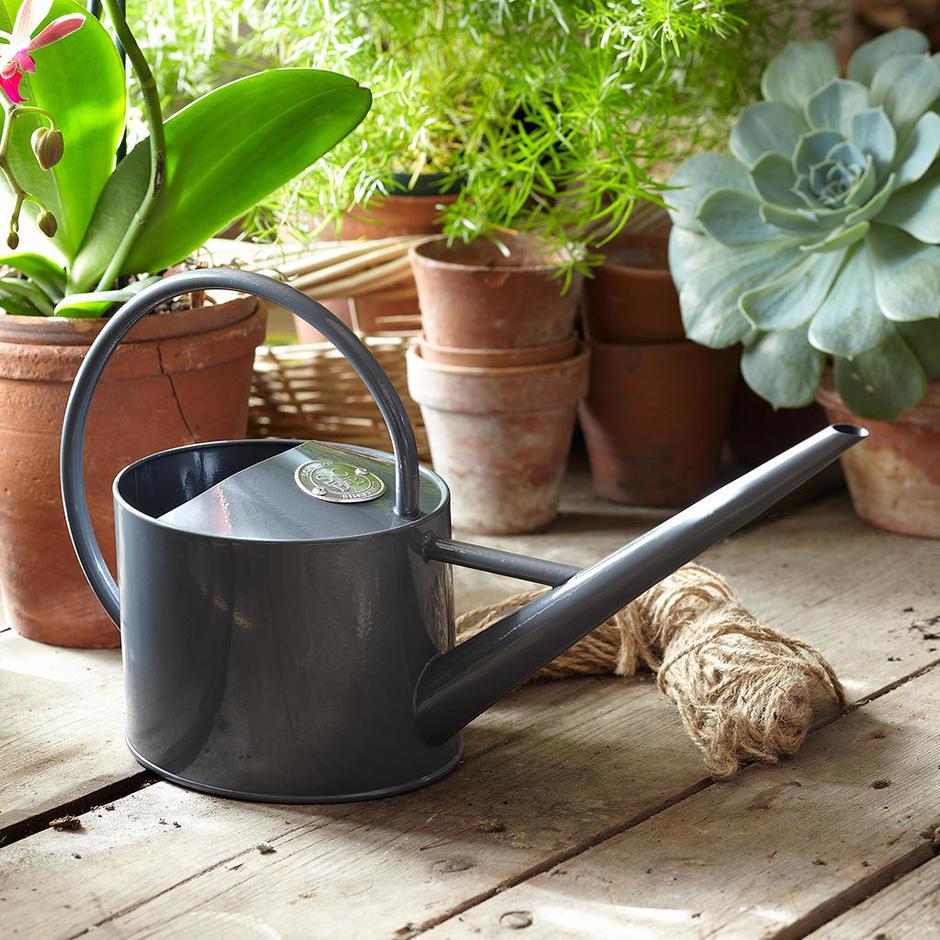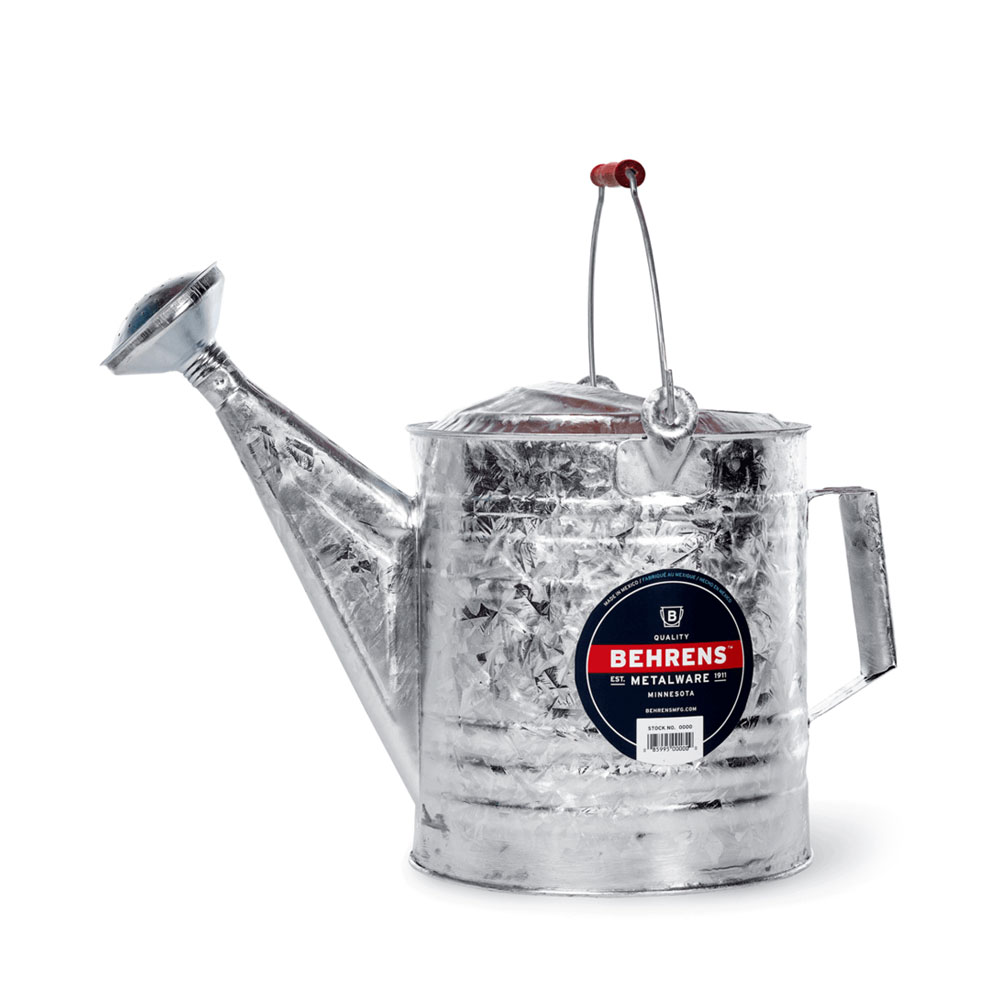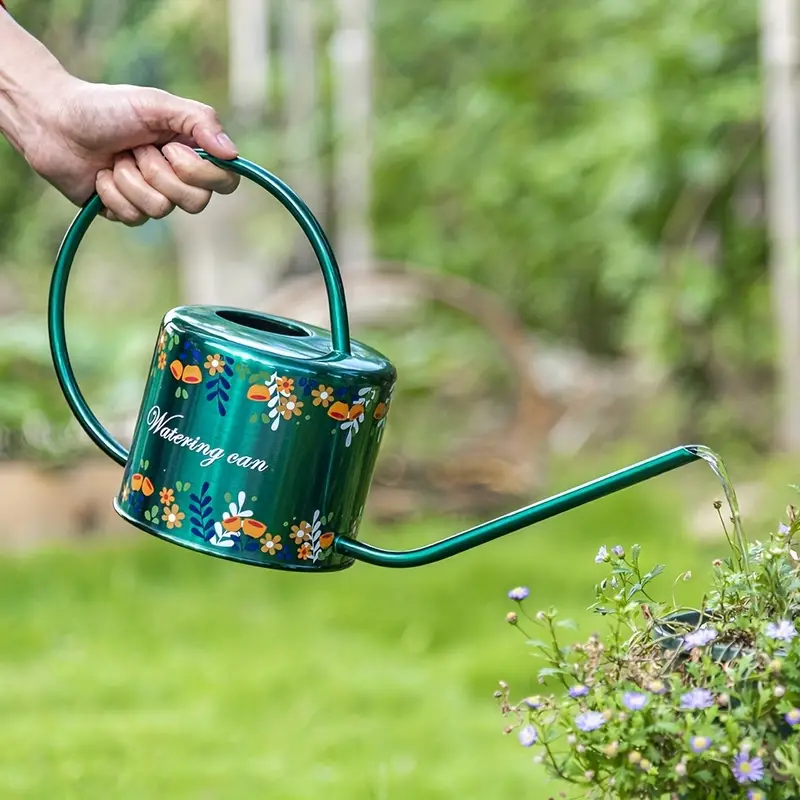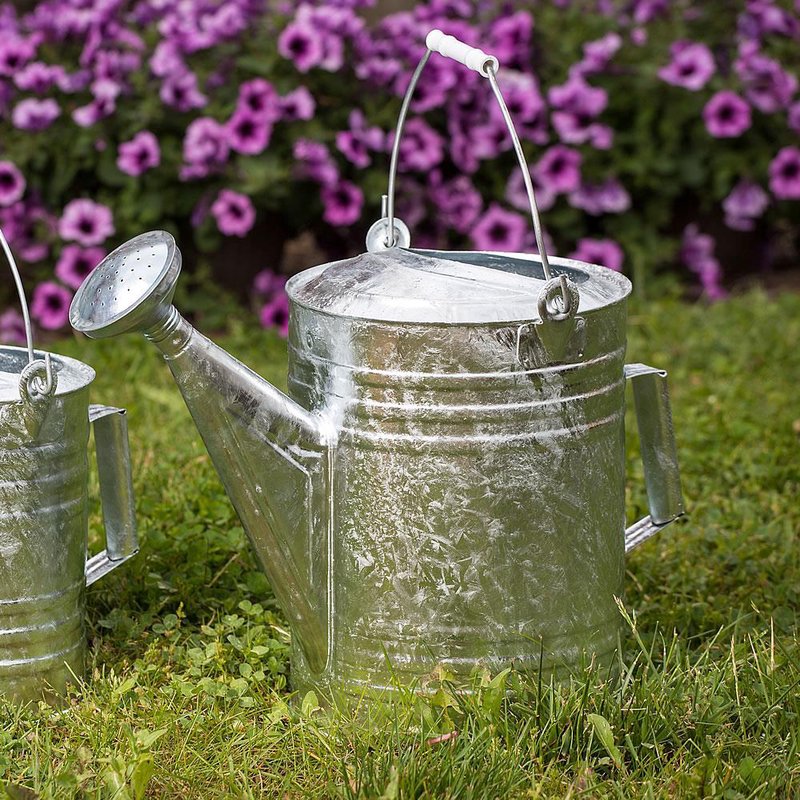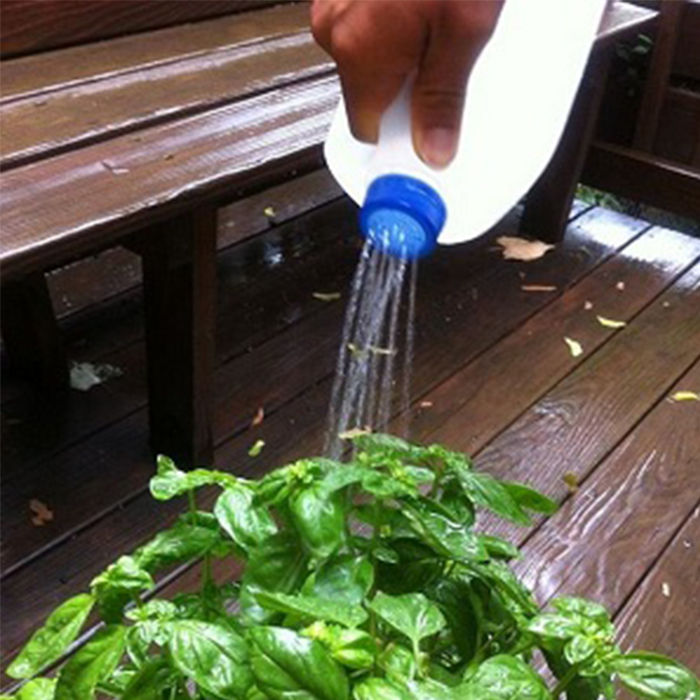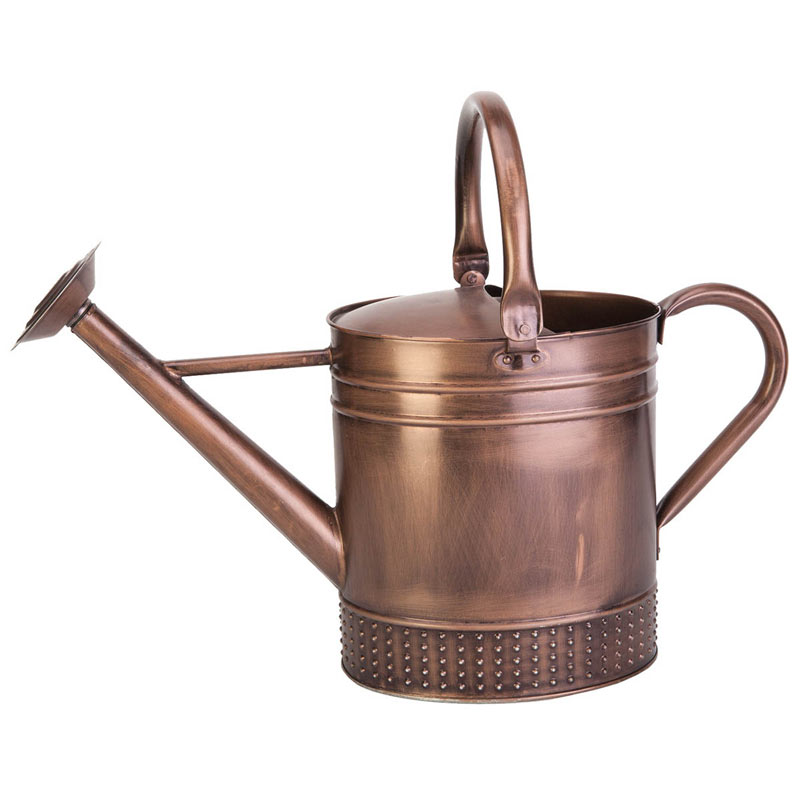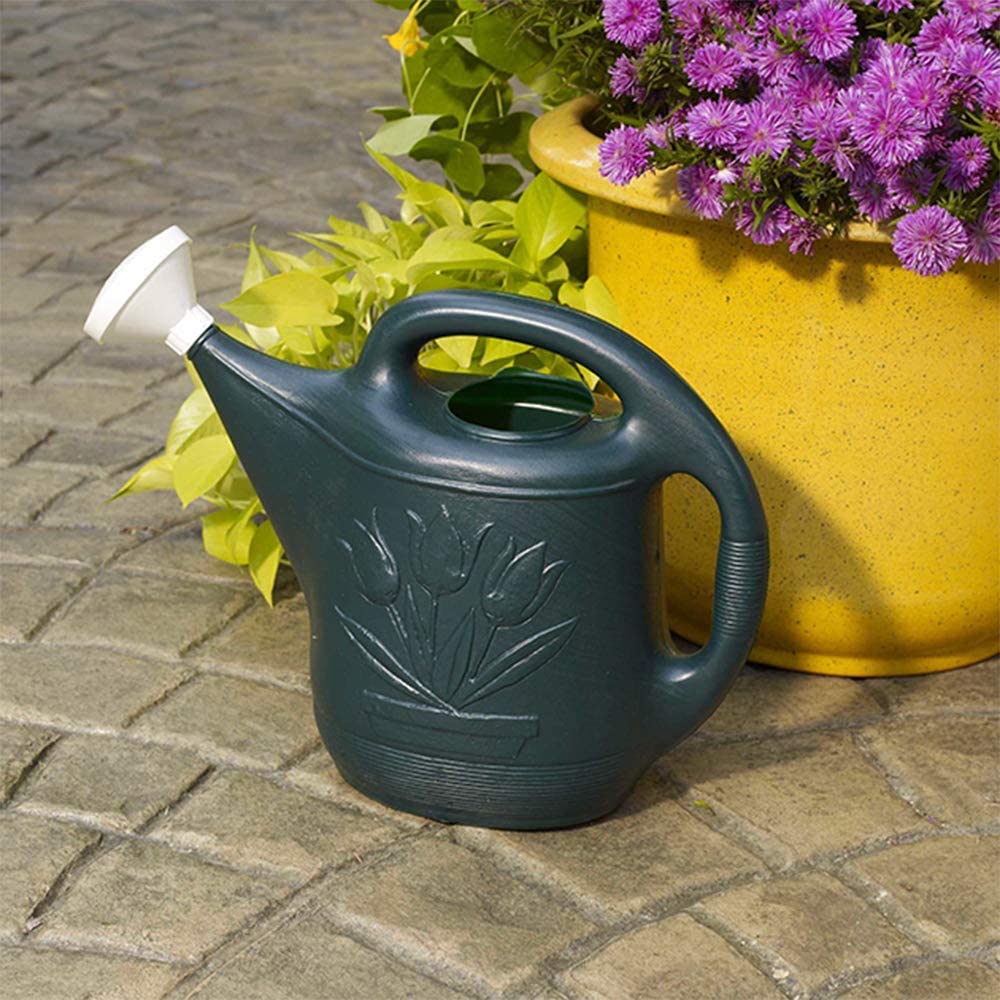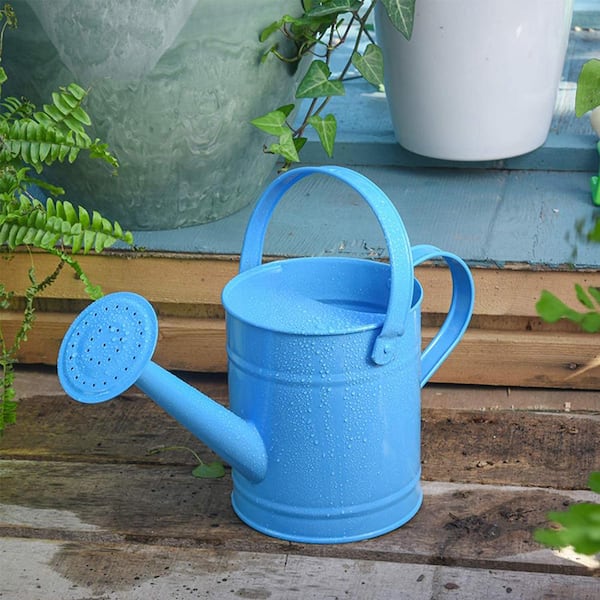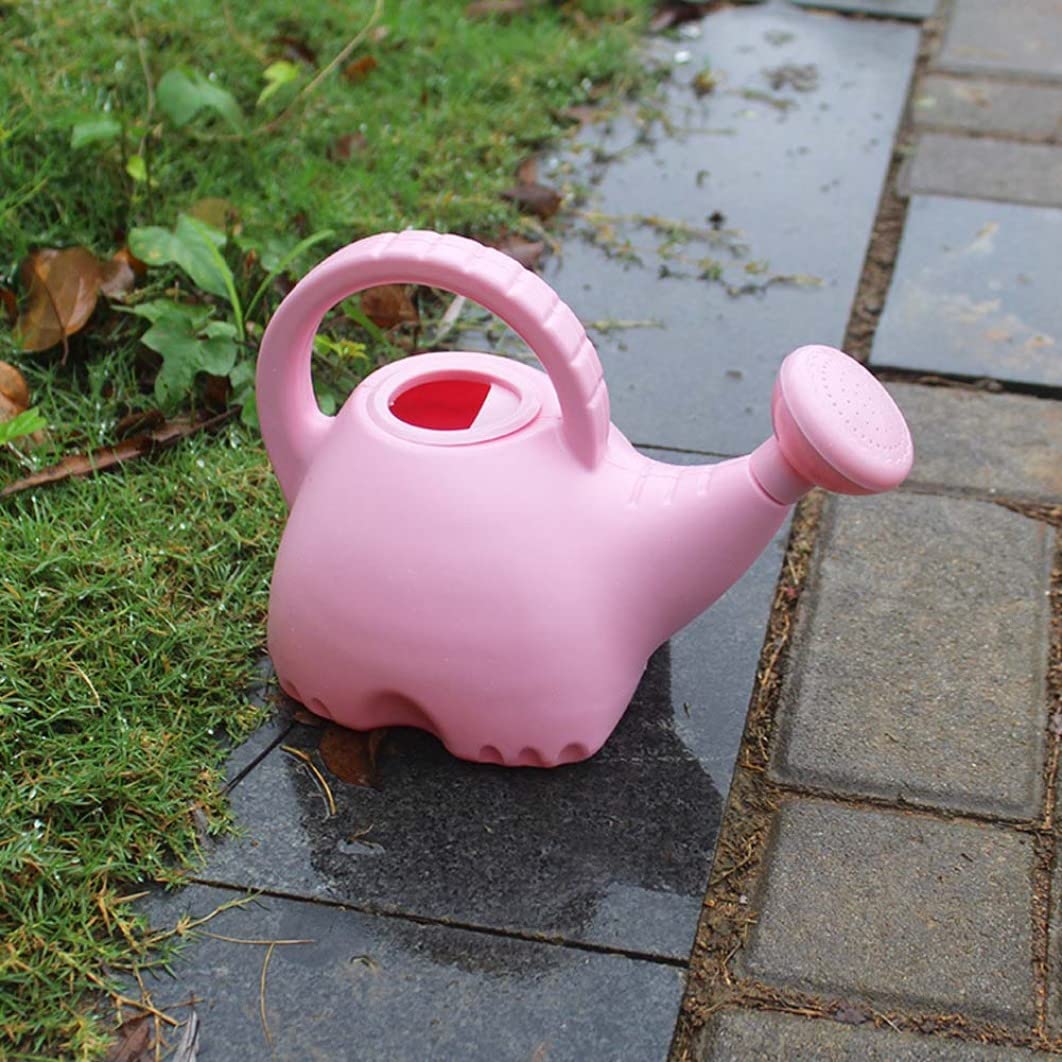
A Joyful Activity: Choosing the Perfect Cute Watering Can
The Importance of a Proper Watering Can
Gardening is a joyful activity for many, and a cute watering can is key. Why does a proper watering can matter so much? First, it ensures that you distribute water evenly across your plants. A good watering can offers control over the water flow, protecting delicate flowers and seedlings. It also prevents overwatering, which can cause root rot. Moreover, an ergonomic design reduces strain on your hands and back. This makes gardening more enjoyable and less of a chore. Remember, the right cute watering can turns the task of watering into a simple pleasure.
Various Types of Cute Watering Cans
When it comes to choosing a cute watering can, variety abounds. From classic to quirky, there’s a style to match every gardener’s taste. Here are some popular types:
Traditional Watering Cans
A timeless design, traditional watering cans often feature a long spout and a side handle. They’re perfect for reaching under leaves and watering with precision.
Novelty Watering Cans
For a fun twist, novelty cans come in shapes like animals or teapots. They add a whimsical touch to your gardening routine.
Mini Watering Cans
Ideal for indoor plants, mini cans are smaller and easier to handle. They prevent spills and overwatering in tight spaces.
Industrial Watering Cans
These are built for endurance and large gardens. With sturdier materials, they handle frequent use with ease.
Self-Watering Cans
Innovation meets tradition with self-watering cans. They have built-in mechanisms that slowly release water, perfect for busy gardeners.
Incorporating a cute watering can that fits your needs adds charm and functionality to your gardening. Remember to consider the weight, balance, and ease of pouring when selecting your can.
Material Matters: Plastic vs. Metal Watering Cans
When selecting a cute watering can, material is a crucial factor to consider. Here we’ll compare plastic and metal options, so you can make an informed choice.
Plastic Watering Cans
Plastic watering cans are lightweight and affordable. They come in a variety of colors and designs, adding a playful touch to your gardening tools. They’re also resistant to rust and often less costly than metal cans. However, they may not be as durable in the long run and can become brittle if left in the sun.
Metal Watering Cans
Metal watering cans, on the other hand, boast durability and strength. They can survive falls and rough handling better than plastic ones. They often have a classic look and feel that appeals to traditional gardeners. Metal cans can become heavy when full and might rust over time if not properly cared for.
Choosing between plastic and metal comes down to personal preference and your specific gardening needs. Consider the environment in which you will be using the can, the care you’re willing to give it, and how often it will be used. Keep in mind that the right cute watering can should be as functional as it is attractive.
Capacity and Size Considerations
When hunting for a cute watering can, size and capacity are key elements to think about. The size of your garden and the types of plants you tend to will determine the best choice for you. Here’s what to keep in mind when considering these factors:
- Small Gardens: For those with a few potted plants or a modest garden, a smaller can will suffice. It’s easier to store and maneuver in tight spaces.
- Large Gardens: If you’re watering a large area, a can with a bigger capacity will save you constant refills. It should be comfortable to carry when full, so check the handle design and balance.
- Indoor vs. Outdoor: Indoor plants generally require less water, so a mini cute watering can with a smaller capacity is ideal. Outdoor plants, especially in hot climates, might need more frequent watering, making larger cans more practical.
- Weight when Full: Remember that water is heavy. A can that’s easy to lift when empty might become unwieldy when full. Consider your own physical comfort and ability to carry it.
- Measurements: Look for cans that have measurements marked on the side. This helps in providing the right amount of water for specific plants, avoiding over or under-watering.
The right capacity and size will ensure that your watering routine is as efficient and enjoyable as possible. By selecting a cute watering can that’s a pleasure to use, you’ll look forward to caring for your plants.
Functional Features for Easy Watering
When looking for a cute watering can, ease of use is important. Functional features make watering not just easy, but also efficient. Let’s explore crucial attributes that enhance the experience:
Ergonomic Design
An ergonomic watering can reduces the effort you need to water your plants. Look for a can with a comfortable handle and a design that feels balanced when held.
Adjustable Nozzles
Some watering cans come with nozzles that adjust the water flow. These allow for a light sprinkle or a heavy pour, depending on your plants’ needs.
Long Spouts
A longer spout provides better reach and control. It helps to water the base of the plant without wetting the leaves too much, which is ideal for many plants.
Detachable Heads
Cans with detachable heads give you the flexibility for various watering tasks. They also make cleaning the can much easier.
Lockable Sprayers
For bigger jobs, a lockable trigger can save you from fatigue. It allows for continuous spraying without having to hold down a button.
Clear Measurement Markings
Watering cans with visible measurement lines help you track the amount of water you use. This feature is handy for precise watering schedules.
By choosing a cute watering can with these functional features, you ensure your gardening is effective and enjoyable. Remember to match the can’s features to your garden’s specific needs.
Aesthetic Appeal: Design and Color Options
When selecting your cute watering can, aesthetic appeal plays a significant role. Here’s how to pick the perfect one:
Choose a Style That Reflects Your Personality
Your watering can is more than a tool; it’s a garden accessory. Pick a design that reflects your personal style, be it classic or modern, simple or decorative.
Consider the Color Scheme of Your Garden
Color can influence mood and complement your garden’s palette. Bright colors add vibrancy, while muted tones blend seamlessly with nature.
Look for Unique Patterns or Details
Some cans feature decorative patterns or unique design details. These small touches add character and can make watering feel like a special ritual.
Coordinate with Other Gardening Tools
If you enjoy a cohesive look, consider matching your cute watering can with your other gardening tools. This creates a harmonious gardening set-up.
Remember, while functionality is key, the charm of a cute watering can with the right design and color can make your gardening experience even more delightful.
Where to Buy Cute Watering Cans
After deciding on the features you want, the next step is finding where to buy your cute watering can. Here are some suggestions:
- Local Garden Centers: These stores often carry a variety of gardening supplies, including watering cans with cute designs.
- Home Improvement Stores: Big brands like Home Depot or Lowe’s offer gardening sections with a range of options.
- Online Marketplaces: Websites like Amazon and eBay have a vast selection, from traditional to novelty cans.
- Specialty Online Stores: Look for online retailers that specialize in gardening tools for a more curated offering.
- Craft Fairs or Local Markets: These can be great places to find unique, handcrafted watering cans.
- Second-Hand shops: For a sustainable choice, consider thrift stores or yard sales where you can often find watering cans with character.
Remember to check reviews and product descriptions carefully if you are buying online. Make sure the can meets the functional and aesthetic standards you desire. Happy gardening!
Care and Maintenance for Longevity
Proper care and maintenance of your cute watering can ensures it lasts for many seasons. No matter the material, metal or plastic, simple routines will keep it in great shape. Here are easy steps to follow:
Regular Cleaning
After use, rinse your watering can to prevent dirt build-up. Wash with mild soap and water occasionally. Dry it well to avoid rust or mold.
Proper Storage
Keep it out of harsh weather. Sun can fade colors and weaken plastic. Cold can make metal brittle. Store it in a shed or garage.
Check for Leaks
Regularly inspect your can for holes or cracks. Fix leaks promptly to maintain functionality.
Handle with Care
Be gentle when using and moving your can. Rough handling can lead to dents or damage.
Treat Rust Spots
For metal cans, tackle rust early. Use sandpaper to remove rust. Apply rust-proof paint to protect it.
Refresh Looks
Update your can’s look with waterproof stickers or paint. This adds personality and protects the surface.
Follow these tips to keep your cute watering can as charming and effective as the day you bought it. Happy gardening!

Efficient Watering Can: Watering Can for Indoor Plants
The Importance of Proper Watering for Indoor Plants
Under-watering and over-watering can harm indoor plants. Getting it right is vital for plant health. Here’s why proper watering matters:
- Root Health: Too much water leads to root rot, while too little can dehydrate roots.
- Nutrient Uptake: Water carries essential nutrients from soil to plant.
- Leaf Health: Leaves need water for photosynthesis and to prevent wilting.
- Disease Prevention: Proper watering can prevent diseases caused by stagnant water.
- Growth: Adequate water is crucial for growth; plants use water for cell expansion.
Watering indoor plants correctly will keep them healthy and help them thrive. Using a well-designed watering can for indoor plants makes regular and accurate watering easier. It can also be a joy rather than a chore. Balance and care in watering ensure your plants get just the right amount of moisture. This contributes to a luscious, vibrant indoor garden that you can be proud of.
Types of Watering Cans for Indoor Gardening
Choosing the right watering can for indoor plants is crucial. With various types available, picking one can seem daunting. Here are the main types to consider:
- Plastic Watering Cans: These are lightweight and affordable. They come in many sizes and colors. However, they may not be as durable as other materials.
- Metal Watering Cans: Often made from stainless steel or galvanized metal. They are sturdy and long-lasting. They tend to be heavier but can withstand frequent use.
- Ceramic Watering Cans: These add a decorative touch to your indoor garden. They are heavier and fragile but can be a beautiful accessory.
- Self-Watering Cans: Some have a design that allows for slow, steady water release. This can be great for consistent watering without overdoing it.
- Novelty Watering Cans: Designed to look like animals or other fun shapes. They can make watering plants more enjoyable. Yet, their functionality might not match traditional designs.
Choosing the right type depends on your needs, the number of plants, and personal style. For a single plant, a small, lightweight can might work well. For those with more plants or heavier watering needs, a robust metal can could be better. It’s all about matching the can to your indoor gardening routine. When selecting, keep the key factors of durability, capacity, and ease of use in mind.
Factors to Consider When Choosing a Watering Can
When picking a watering can for indoor plants, several factors are key to consider:
- Size and Capacity: Match your can to the number of plants you have. A large garden needs a bigger can.
- Material: Choose between plastic, metal, or ceramic. Think about longevity and weight.
- Design and Spout: Look for cans with a comfortable handle and a spout that can reach tight spots.
- Ease of Filling: Consider the can’s opening. It should be easy to fill without spilling water.
- Durability: Opt for a can that will last. Metal often outlives plastic or ceramic.
- Maintenance: How easy is it to clean the can? Regular cleaning prevents mold growth.
- Aesthetic: Do you want the can to match your decor? If so, color and style matter.
Remember, a well-chosen can makes watering simple, boosts your plants’ health, and saves you time. It’s worth investing in a can that suits your gardening routine and fits well with your indoor space.
Ergonomic Watering Can Designs for Comfort and Efficiency
Ergonomics play a key role in watering can design. A good watering can for indoor plants should be easy to hold, carry, and pour without causing strain. Here are features to look out for:
- Lightweight Material: Opt for cans made with light materials. They reduce arm fatigue during long watering sessions.
- Balanced Design: Ensure the can feels balanced when full. A centered gravity point aids in control.
- Curved Handle: A handle with a natural curve fits better in your hand.
- Long Spout: A spout with length allows you to water hard-to-reach plants. No more stretching or bending.
- Thumb Control: Some cans have a thumb-controlled valve. They offer better water flow control.
Ergonomic watering cans are a wise choice for gardeners. They combine functionality with comfort. Such cans help prevent wrist and back pain often seen with awkward or heavy cans. By investing in ergonomically designed watering cans, you can enjoy tending to your indoor garden. Your plant care routine becomes more efficient and less tiresome. This promotes a more enjoyable and successful gardening experience.
Innovative Features in Modern Watering Cans
Modern watering cans for indoor plants boast innovative features to enhance your gardening. Some stand out features to consider include:
- Detachable Spouts: These allow for easier cleaning and can adjust to different water flow needs.
- Built-in Measuring Scales: They help you provide the precise amount of water your plants need.
- Filters: They trap debris and keep the water clean, protecting plant roots.
- Comfort Grip Handles: These reduce hand strain and improve your control when watering.
- Water Level Indicators: Clear markings show how much water is in the can, so you refill at the right time.
- Collapsible Bodies: Some cans collapse to save space when not in use, perfect for small living areas.
- Dual-Action Spouts: Offer both a sprinkle and a steady stream. This feature caters to various plant needs.
These features make watering more efficient and less of a hassle. They show how design has come a long way, focusing on the user’s ease and the plant’s health. Choose a can with features that match your watering habits and the size of your indoor garden. You may find some features more useful than others. It’s all about finding the right blend that works for you. Go for a watering can that makes your routine easier and helps your plants flourish.
Maintaining Your Watering Can for Longevity
Maintaining your watering can for indoor plants is essential for its durability. Proper care will prevent wear and tear and keep it functional for years. Here’s how:
- Regular Cleaning: After each use, rinse the can to remove dirt or residue. This ensures no clogs form in the spout.
- Dry Storage: Store your can in a dry place to prevent rust and mold. Metal cans, especially, need dry conditions.
- Check for Damage: Look for dents, leaks, or corrosion. Address these issues early to avoid bigger problems.
- Handle with Care: Avoid dropping your can. This can prevent dents in metal cans or cracks in ceramic ones.
- Replace Parts: If your can has detachable parts, replace them when they show wear.
A little effort goes a long way in maintaining your watering can. Keep it clean, store it properly, and handle it with care. By doing so, you ensure that your investment continues to make watering your plants easy and effective.
Tips for Watering Indoor Plants Effectively
Proper watering techniques are critical for the health of indoor plants. Here are some straightforward tips to water your indoor plants effectively:
- Check Soil Moisture: Before watering, feel the soil. If the top inch is dry, your plant likely needs water.
- Use Room-Temperature Water: Cold water can shock plant roots. Always use water at room temperature.
- Water Evenly: Distribute water around the whole pot to reach all the roots.
- Morning Watering: The best time to water is in the morning, giving plants time to absorb it before nightfall.
- Avoid Wet Leaves: Wet leaves can lead to fungal diseases. Aim your watering can for indoor plants at the soil, not the foliage.
- Drainage Is Key: Ensure your pots have drainage holes to avoid water pooling at the bottom.
- Adapt to Seasons: Plants often need less water in winter. Adjust your watering habits with the seasons.
- Monitor Plant Health: Keep an eye on your plant’s leaves and growth. They indicate if the watering schedule works.
By following these tips and using a well-designed watering can for indoor plants, you’ll maintain vital, beautiful greenery in your living space. Remember, each plant is unique, so they may have different watering needs. Regularly observe and adjust your watering technique to suit each plant’s requirements. Happy gardening!
Where to Buy the Best Watering Cans for Indoor Plants
Finding the right watering can for indoor plants can enhance your gardening experience. There are plenty of places to buy watering cans, each offering different styles and features. Here’s a guide to help you find the best watering can for your needs.
- Local Garden Centers: Visit nearby garden shops. They often have a selection of watering cans. Staff can offer advice based on your needs.
- Home Improvement Stores: Stores like Home Depot or Lowe’s carry gardening tools. Look for watering cans in their gardening section.
- Online Retailers: Websites like Amazon or eBay offer a vast range. Read reviews to gauge quality and suitability.
- Specialty Gardening Stores: These stores focus on gardening supplies. They may have unique or high-end cans.
- Direct from Manufacturers: Buying from the brand’s website can ensure authenticity. They might offer warranties or replacement parts.
Before purchasing, remember to check for ergonomic design and innovative features. Reviews and product descriptions can provide useful insights. Match the can to the number of plants you have and consider how it will fit into your space. With the right care, a quality watering can will be a long-term investment in your indoor garden’s health and beauty.

Maintaining Your Galvanized Watering Can for Longevity
Introduction to Galvanized Watering Cans
Galvanized watering cans are popular among gardeners. These cans boast a metal coating that protects against rust. This coating is zinc, a key factor in their durability. People choose these watering cans for their blend of functionality and classic style.
History of Galvanized Metal in Gardening Tools
The use of galvanized metal dates back to the 18th century. Farmers first used this metal to make tools last longer. The zinc coating was a defense against weather and soil. This made galvanized tools a staple in gardening. Their strength and longevity became widely recognized.
Benefits of Using a Galvanized Watering Can
A galvanized watering can offers several benefits. First, its rust-resistant nature ensures a long life. This makes it a cost-effective choice for gardeners. Second, its sturdy build can handle daily use. These cans also provide a steady stream of water for plants. Lastly, their traditional look adds charm to any garden shed or patio.
Choosing the Right Galvanized Watering Can
Choosing the right galvanized watering can is crucial for both garden health and user convenience. When shopping for one, you must consider several factors to pick the best option.
Factors to Consider When Purchasing
When selecting a galvanized watering can, keep in mind its capacity, durability, and design. Look for a size that fits your gardening needs without being too heavy when filled. Check the handle and spout for comfort and ease of pouring. Ensure the can has a well-applied zinc coating to resist rust effectively.
Other considerations include the can’s balance when full and empty, the ease of filling, and the price. While a higher price often indicates better quality, look for good value. Remember, a durable watering can saves money over time.
Different Designs and Their Advantages
Galvanized watering cans come in various designs, each with unique benefits. A long spout design is perfect for reaching under foliage to water plants at the base. This design helps prevent leaf diseases caused by damp foliage. Some cans feature detachable spouts for more versatility.
Cans with a rose attachment create a gentle shower of water, ideal for seedlings and delicate plants. A can with a wide opening is easy to fill and clean, saving time and effort. Some designs are decorative as well as functional, enhancing the aesthetic of your gardening space.
Consider these factors and designs to find a galvanized watering can that not only looks good but also meets all your gardening requirements.
Essential Maintenance Tips for Galvanized Watering Cans
To keep your galvanized watering can in top shape, follow these essential maintenance tips. Proper care will extend its lifespan and save you the cost of frequent replacements. Begin with routine practices that maintain the can’s structure and appearance.
Regular Cleaning and Drying Practices
Regular cleaning is vital for any galvanized watering can. After each use, rinse the interior with water to remove any remaining moisture. Clean the outside with a soft brush or cloth to eliminate soil and debris. Dry thoroughly with a towel or by airing to prevent moisture buildup. Moisture is the prime cause of rust in galvanized metal.
Dealing with Rust and Oxidation
Despite rust resistance, galvanized watering cans can still experience oxidation if neglected. At the first sign of rust, act quickly. Scrub the affected area with a mixture of vinegar and baking soda, using a soft brush. This natural method helps remove rust without damaging the zinc coating. After rust removal, rinse and dry the can thoroughly to halt the oxidation process. Consistent care in dealing with rust and drying your can after use will greatly increase its longevity.
Proper Storage Solutions for Galvanized Watering Cans
To ensure the longevity of your galvanized watering can, storing it correctly is essential. Proper storage prevents damage and preserves the can’s integrity over time. Here are ways to store your watering can effectively.
Best Practices to Prevent Damage
Keep your galvanized watering can in a dry, sheltered location. Moisture is the main enemy of galvanized metal. A dry storage area will minimize rust risk. Hang the can upside down to ensure any water left inside can drain out. Avoid placing the can on rough surfaces. Rough surfaces can scratch the can’s galvanized coating. Instead, choose a smooth, flat surface to rest your can. Keep the can away from harsh chemicals. Fertilizers and pesticides can degrade the zinc coating.
Seasonal Storage Tips
During off-seasons, empty your watering can completely. Water left inside can freeze and expand during winter, causing damage. It’s best to store the can indoors. This protects it from extreme temperatures and winter weather. Before storing it away, clean and dry the can as described in maintenance tips. Check for any signs of wear or rust. Address these issues before storage. Following these tips helps ensure your galvanized watering can is ready for use when the next gardening season arrives.
Enhancing the Durability of Your Watering Can
To extend the life of your galvanized watering can, apply these durability-enhancing tips. They help protect against wear and tear.
Protective Coatings and Treatments
To further guard your watering can against the elements, consider additional protective coatings. After regular cleaning, apply a clear metal sealer or wax. These treatments add an extra layer of defense. They block moisture and dirt from reaching the zinc coating. Reapply treatments once a year or as needed. Always follow product instructions for the best protection.
Handling and Usage Tips to Avoid Dents
Handle your galvanized watering can with care. Dents and scratches can harm the protective zinc layer. When using your can, place it gently on surfaces and avoid dragging it. Use both hands to carry a full can to distribute the weight. This avoids stressing any one spot. Store your can in a designated spot where it’s not likely to fall or get knocked over. Take these steps to keep your can free from dents and scratches. A well-maintained galvanized watering can can serve you for many gardening seasons to come.
Troubleshooting Common Issues
Even with proper care, your galvanized watering can may encounter some common issues over time. Understanding how to troubleshoot these problems can save you from frustrations and extend the can’s lifespan.
Solutions for Leaks and Drips
Leaks and drips in a galvanized watering can often occur due to small holes or loose joints. Here’s how to fix them:
- Identify the source of the leak by filling the can with water and observing where water drips out.
- For small holes, use a waterproof sealant suitable for metal; apply it according to the product’s instructions.
- Tighten any loose joints or handles using a suitable wrench; be careful not to strip the metal.
- If the leak is at the spout or rose, check for a worn-out washer and replace it if necessary. Always keep your galvanized watering can dry after repairs to avoid rust.
Dealing With Wear and Tear Over Time
Continuous use can lead to wear and tear on your galvanized watering can. Manage it effectively with these steps:
- Inspect your can regularly for signs of wear, such as thinning metal or compromised coating.
- When you notice wear, reinforce the area with a protective layer of metal paint or sealant.
- Prevent further damage by avoiding rough usage, like dragging the can on concrete.
- Replace any parts that are significantly worn out, if possible, to maintain functionality.
By addressing leaks, drips, and wear and tear promptly, you keep your galvanized watering can operational for many more gardening seasons.
Sustainability and Environmental Impact
As you appreciate the durable nature of your galvanized watering can, it’s also vital to consider its environmental impact. Sustainability involves recycling and the eco-friendly usage of products. Let’s explore how to manage your galvanized watering can responsibly.
Recycling and Disposal of Old Watering Cans
When your galvanized watering can reaches the end of its life, don’t just toss it in the trash. Recycling is the best option for disposal. Many recycling centers accept galvanized metal. They can repurpose the material into new products. Check with local waste facilities for guidelines on recycling metal. If recycling isn’t an option, consider repurposing the can as a garden planter or tool holder. This gives the can a second life and keeps it out of the landfill.
Eco-Friendly Usage of Galvanized Watering Cans
Use your galvanized watering can in ways that benefit the environment. Collect rainwater for your watering needs. This saves tap water and is great for your plants. Avoid letting water run when you fill your can. This conserves water and is more sustainable. Look after your can with regular maintenance. This extends its life and reduces the need for replacements. By following these guidelines, you’ll enjoy your galvanized watering can and protect our planet.
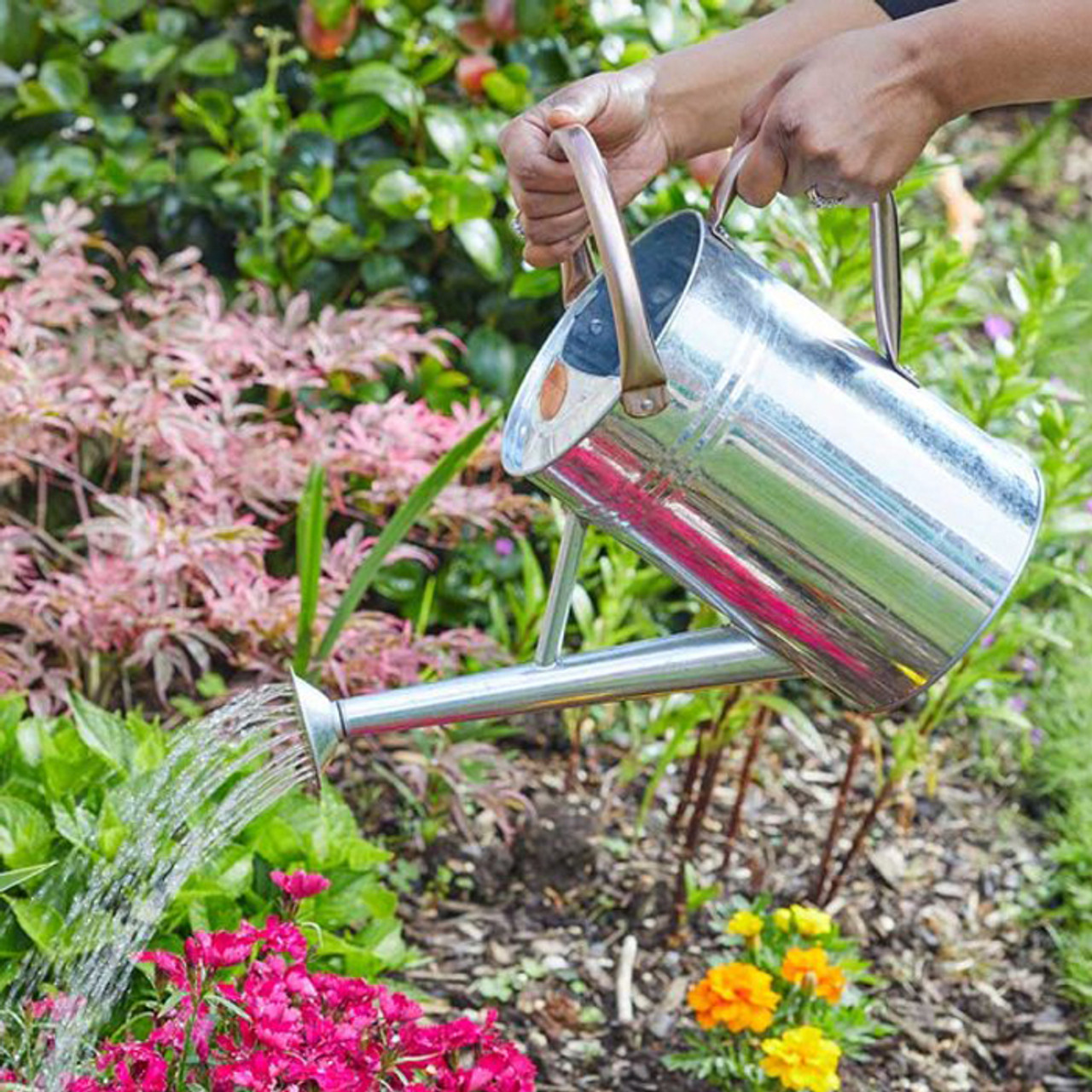
The Flower Watering Can: Efficient Flower Watering Techniques
The Importance of Proper Watering for Flower Health
Proper watering is vital for flower health. It ensures strong roots and vibrant blooms. Water acts like a nutrient for flowers, much like sunlight and soil. Without the right amount, flowers can wilt, lose color, and become more prone to diseases. Overwatering is just as harmful. It can lead to root rot, fungus, and weak growth. An ideal balance promotes plant resilience, keeps pests at bay, and encourages flowering. Use a flower watering can with a gentle shower to avoid damage. With correct watering, flowers can reach their full potential. They brighten gardens and homes alike. Remember that each flower species has unique needs. Understanding these will help you water effectively, resulting in healthy and beautiful plants.
Selecting the Right Watering Can for Your Flowers
Choosing the right flower watering can make a significant difference. It affects your ease of use and plant health. Consider the can’s size, material, and spout type when selecting. A small, lightweight can is best for indoor plants. Large gardens need bigger cans to avoid frequent refills. Material matters for durability and usability. Plastic cans are light and inexpensive. Metal cans last longer but can be heavier.
Look for a spout with a detachable rose. This feature allows for gentle watering that mimics soft rain. The holes ensure even distribution without overwhelming the plant. Remember, a can with a comfortable grip will reduce hand fatigue. Balancing these factors ensures your plants get the care they need. A well-chosen watering can helps maintain flower health and vibrancy.
Understanding Soil Moisture and Water Requirements for Different Flower Species
Understanding soil moisture levels and the varying water requirements for different flower species are crucial for plant health. Each species of flower comes with its own unique needs that must be attended to. Here’s how you can nail this aspect of gardening:
- Check the Soil: Before watering, always check the soil moisture. Use your finger or a soil moisture meter to ensure the soil is not too dry or excessively moist.
- Know the Species: Research the specific water needs of each flower species in your garden. Some flowers prefer dry conditions, while others thrive in moist soil.
- Watch the Weather: Natural rainfall will affect your watering schedule. Reduce additional watering during wet periods to prevent over-saturation.
- Observe Plant Signals: Pay attention to your flowers. Signs such as wilting or yellowing leaves can indicate if the plant is receiving too much or too little water.
- Create a Watering Schedule: Based on your observations and research, create a tailored watering schedule. This ensures that each species gets the right amount of water at optimal times.
- Adjust for Growth Stage: Young plants and blooming flowers may need more water compared to established ones. Adjust your watering approach accordingly.
By putting in the effort to understand and meet the water requirements of different flower species, you can ensure they grow healthily and produce beautiful blooms. Always keep a flower watering can handy that suits the scope of your gardening to make the task more manageable.
Best Practices for Watering Indoor Flowers
When watering indoor flowers, consistency and technique are key. Here are some best practices:
- Use Lukewarm Water: Cold water can shock the roots while hot water can harm them. Lukewarm water is best.
- Morning Watering: Water in the morning. This gives plants time to absorb the water before the nightfall.
- Water Evenly: Make sure you distribute water evenly across the soil. This prevents root rot.
- Avoid Leaves: Water the soil directly. This keeps the leaves dry and reduces disease risk.
- Check Drainage: Ensure your pots have drainage holes. This carries away excess water.
- Wait for Dry Soil: Let the top inch of soil dry out before watering again. This meets flower needs without overwatering.
By using these practices with your flower watering can, you will promote healthy, robust indoor flowers.
Watering Outdoor Flower Gardens: Tips and Techniques
Watering outdoor flowers requires special attention. Use these tips and techniques to maintain garden health:
- Morning Watering: Water in the early morning. This reduces evaporation and gives plants time to drink up.
- Deep Watering: Aim for deep soil saturation. This encourages deeper root growth and stronger plants.
- Use Mulch: Apply mulch around plants. It retains moisture and keeps roots cool.
- Choose the Right Flower Watering Can: For outdoor gardens, select a can with a long spout. It helps to water the base of each plant accurately.
- Be Mindful of Weather: Adapt your watering schedule according to the weather. Decrease during rainy periods and increase during dry spells.
- Water-Demanding Plants First: Prioritize plants with high water needs. Ensure they get enough before moving to less thirsty flowers.
- Avoid Overhead Watering: Don’t water from above. It can cause leaf diseases and does not reach roots effectively.
- Check Soil Regularly: Assess soil moisture often. Adjust your watering plan to ensure optimal soil conditions.
Implement these techniques alongside a reliable flower watering can to give your outdoor garden the best care. Consistent practice leads to vibrant blooms and thriving plants.
Seasonal Considerations in Flower Watering: Adjusting Your Routine
Seasonal changes impact how we use our flower watering can. With each season comes distinct climate conditions, affecting your plants’ watering needs. Here’s a guide to tweak your routine through the year:
- Spring: This is a growth season for flowers. More water helps new plants establish roots. Start with moderate watering as the weather shifts from cool to warm.
- Summer: Heat and sun intensity increase. Your flowers may need daily watering. Watch for quick soil drying, especially for potted plants.
- Autumn: Cooler temperatures and less sunlight reduce water needs. Gradually reduce your watering frequency. Check the soil more, as it retains moisture longer.
- Winter: Many plants go dormant. Water sparingly, if at all. Avoid overwatering to prevent root issues. Some indoor plants still need regular watering, but much less than during warmer months.
Weather plays a role, too. Rainy seasons might mean you don’t need to water at all. Dry spells, however, require you to use your flower watering can more often. Changes in daylight hours also affect how plants use water.
Keep tabs on humidity levels as they influence soil moisture. In dry conditions, your flowers may need more frequent watering. However, in high humidity, they require less.
Remember, adjustments to watering aren’t just about the amount. The timing is key. Early morning remains the best time to water in most seasons. It reduces evaporation and allows plants to use the water effectively.
Using mulch can help maintain soil moisture across seasons. It’s a natural insulator for your garden. Whether it’s a hot summer day or a cool autumn evening, mulch can keep the soil at an even temperature.
Incorporate seasonal knowledge into your care routine. Use your flower watering can wisely to keep your blooms vibrant year-round.
The Role of Mulching in Maintaining Soil Moisture for Flowers
Mulching plays a critical part in preserving soil moisture for your flowers. Here are the advantages:
- Retains Water: Mulch helps soil hold on to water, reducing the need for frequent watering with a flower watering can.
- Limits Evaporation: It provides a barrier that limits water loss through evaporation. Your flowers gain more from each watering session.
- Keeps Roots Cool: During hot days, mulch keeps the soil at a cooler temperature. This protects plant roots from heat stress.
- Blocks Weeds: By covering the soil, mulch stops many weeds from sprouting. Weeds compete with flowers for water, so less weeds means more water for your plants.
- Adds Nutrients: Decomposing organic mulch adds valuable nutrients to the soil, further supporting flower health.
When applying mulch, spread a 2-3 inch layer around your flowers. Keep it away from the stems to avoid rot. Choose organic mulches like wood chips, straw, or leaves for the best results. Mulch breaks down over time, so refresh it as needed to maintain its benefits.
Incorporate mulching into your routine to enhance the effectiveness of your flower watering can. This way, you’ll ensure your plants remain hydrated and happy through the seasons.
Innovative Watering Solutions: Drip Systems, Self-Watering Pots, and Watering Globes
While a traditional flower watering can is essential for many gardeners, innovative tools make watering easier and more efficient. Here are three modern solutions:
- Drip Systems: Ideal for consistent, hands-free watering. Set up a drip irrigation system to deliver water directly to the roots. It’s precise and saves water. Good for large gardens and busy plant owners.
- Self-Watering Pots: These pots have a built-in reservoir. They provide a steady water supply over time. Perfect for indoor use and for when you’re away.
- Watering Globes: Glass or plastic globes that release water slowly into the soil. Fill them up, insert into the pot and let them water your flowers gradually. They’re decorative and practical for small pots.
Each of these options supports plant health just like a well-used flower watering can. Choose based on your garden’s size, your routine, and each flower’s needs. Remember to adjust for weather and seasons as you would with traditional watering.
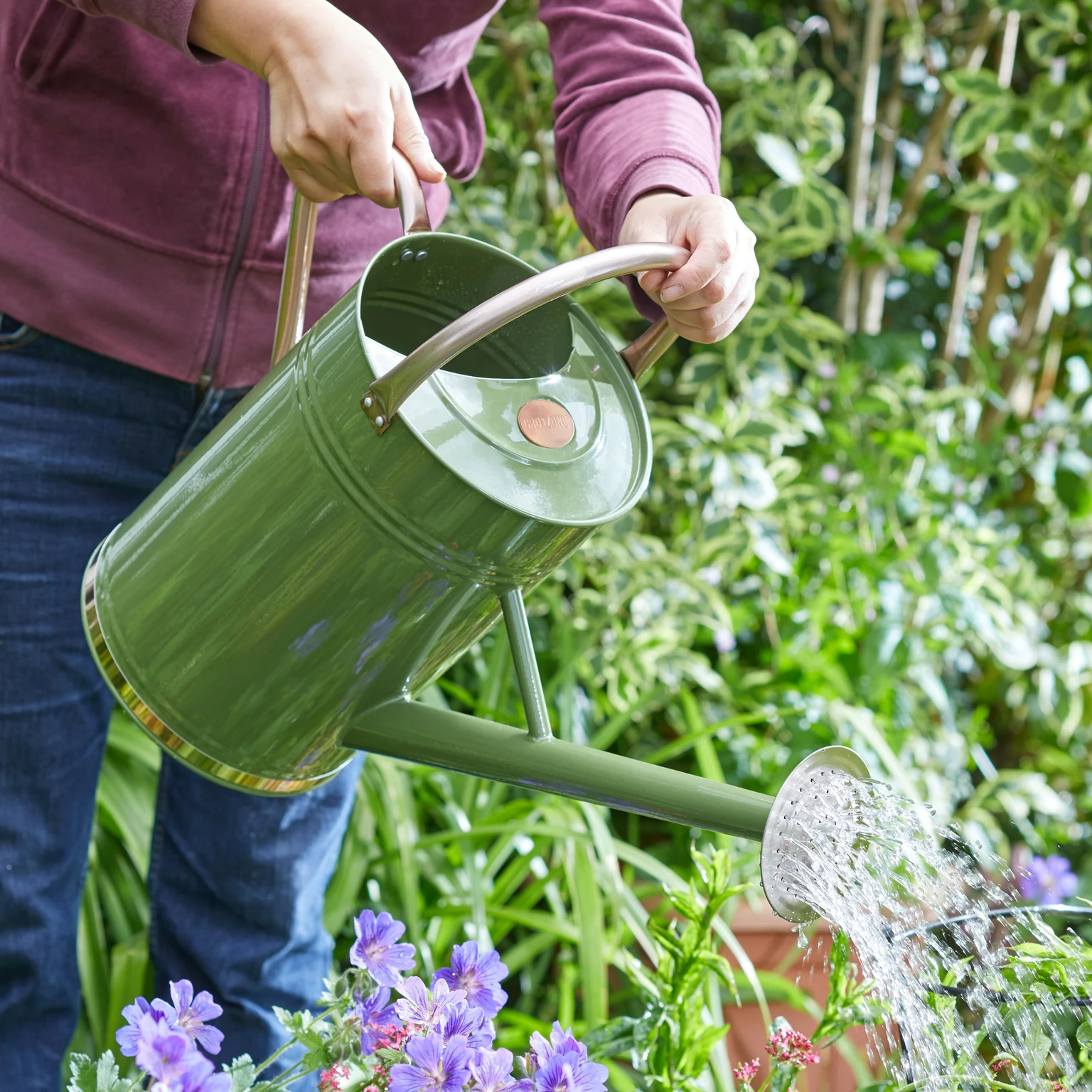
The Right Large Watering Can: A Buyer’s Guide
Types of Large Watering Cans
Choosing the right large watering can is crucial. Different types serve different needs. Let’s explore the common varieties available.
Plastic Watering Cans
Plastic large watering cans are lightweight. They are great for those who prefer ease of carrying. They resist rust, making them perfect for outdoor use.
Metal Watering Cans
Metal large watering cans are sturdy. They last longer and withstand harsh use. Often, they have a traditional look that some gardeners prefer.
Galvanized Steel Cans
Galvanized steel large watering cans are highly durable. They handle heavy-duty watering tasks with ease. They are designed to prevent rust, adding to their longevity.
Stainless Steel Cans
Stainless steel large watering cans offer a modern look. They are strong and resist corrosion. These are suitable for gardeners seeking a balance of form and function.
Collapsible Watering Cans
Collapsible large watering cans save space. They are ideal for gardeners with limited storage. These are usually made from flexible materials like silicone.
Decorative Watering Cans
Decorative large watering cans often serve a dual purpose. They water plants and add aesthetic value to the garden space. These cans might be hand-painted or designed with unique shapes.
Selecting the right type of large watering can depends on individual needs. Consider the weight, durability, and aesthetic preferences before making a choice.
Key Features to Consider
When shopping for a large watering can, key features should guide your decision. Here’s what to look for:
Spout Length and Design
Spout design affects watering precision. A long spout reaches plants easily. This is vital for watering in large gardens.
Handle Comfort and Grip
Your comfort matters. Look for a can with an ergonomic handle. It should allow a firm, comfortable grip during use.
Balance and Weight Distribution
A well-balanced large watering can prevents strain. It should feel stable and easy to carry when full. Check its weight when empty and imagine it when filled.
Watering Control and Flow Rate
Control is key for proper plant care. Opt for cans with adjustable flow rate for different plants’ needs. Nozzles should provide even distribution of water.
Durability
Invest in a durable large watering can to avoid frequent replacements. Assess the build quality and material to predict its lifespan.
Filling Ease
Consider the opening size. A wide mouth makes filling the can simpler and helps avoid spills.
Prioritize these features to find a large watering can that serves you best. Durability, balance, and comfort in handling are essential for gardening efficiency.
Benefits of Using Large Watering Cans
The use of a large watering can presents several benefits for the avid gardener. Some of these advantages include:
Enhanced Water Conservation
A large watering can assist in reducing water waste. It allows for targeted watering, ensuring that water goes directly to the plants’ roots where it’s needed most.
Time Savings
With a large watering can, gardeners can water more plants in one go. This means less time refilling and more time tending to other gardening tasks.
Reduced Physical Strain
Carrying water in small batches can be hard on the body. A large size means fewer trips, minimizing the strain on your back and arms.
Better for Established Gardens
For gardens with many plants or larger areas, a large watering can is ideal. It holds enough water to cover the area without needing a hose or multiple refills.
Consistent Water Delivery
Thanks to adjustable nozzles and fine rose attachments, large watering cans provide a gentle and steady stream. This helps to mimic natural rainfall and avoids disturbing delicate seedlings or soil.
Portability Convenience
Even with a large capacity, these cans are designed for easy transportation. They are perfect for gardens without a nearby water source.
Choosing a large watering can is about boosting efficiency, comfort, and the well-being of your plants. Keep these benefits in mind when you search for the perfect gardening companion.
Material Choices for Durability and Function
Choosing the right material for your can is vital. It affects both durability and how you’ll use your can. There’re a few options to consider.
Plastic
Plastic is a common choice for gardeners. It’s light and easy to carry around. Plus, no rust means it lasts a long time outdoors.
Metal
Metal gives a classic feel to your gardening tools. It’s heavy-duty and can take a lot of use. Just note, it may get heavy when full.
Galvanized Steel
This material stands up to the toughest tasks. Galvanized steel fights off rust and handles years of gardening with ease.
Stainless Steel
Stainless steel is a stylish pick. It’s tough against corrosion and keeps its shine over time. Gardeners love its perfect mix of looks and strength.
Silicone
Silicone is for those who value convenience. Collapsible cans made from this material are great space savers in tight spots.
The material you choose should match your garden’s needs. Think about the weight you can handle and how long you want your can to last. Keep in mind, durable materials like stainless steel or galvanized steel might cost more upfront but can save money down the road by avoiding replacements.
Ergonomic Design: Comfort in Handling
Choosing the right watering can isn’t just about its size or durability. Ergonomics play a crucial role too. A well-designed handle and can shape can make all the difference in how comfortable the can is to use, especially when filled to capacity. When picking out a can, consider the following ergonomic features:
Handle Comfort and Grip
An ergonomic handle is designed to fit comfortably in your hand. This helps in reducing fatigue during prolonged use. Look for a handle with a soft grip or one that’s shaped to your hand’s curve for added comfort.
Can Balance
A can that’s well-balanced feels steadier and lighter, making it easier to carry. When selecting a can, make sure it feels stable in your hand, and the weight is distributed evenly when it’s full.
Lightweight Materials
While metal cans are durable, they can be heavy. Consider a plastic or silicone large watering can for a lighter option. Remember, the lighter the can, the less strain on your arms and back.
User-Friendly Shape
Some cans come with a curved design that makes pouring water easier. This helps to reduce the effort needed to tilt the can to water plants.
Ergonomic design enhances your gardening experience. It lets you focus on the joy of gardening, rather than the discomfort that can come with using an ill-fitting tool. Keep ergonomics in mind to find a large watering can that’s a joy to use every time.
Capacity and Size Variations
When picking a [large watering can], consider its size. This is key to meeting your garden’s needs. Sizes vary, so choose wisely based on how much water you need to carry. Here’s what to think about when looking at size variations:
Look at the Volume
Volume is your starting point. Standard large cans hold between 2 to 3 gallons. This is enough for most garden tasks.
Match to Garden Size
The size of your can should match your garden size. For big gardens, you need a can with more capacity.
Consider Plant Types
Different plants need different amounts of water. Make sure your can’s size suits the plants you have.
Think About Storage
Storage space is often limited. Make sure your choice fits in your shed or garage.
Check Watering Frequency
More plants or dry climate? You might need a bigger can to cut down on refilling trips.
Finding the right capacity in a large watering can helps manage your garden effectively. It ensures that you’re not overworking yourself with too frequent refills. It also makes sure you can handle the weight when it’s full. Choose one that fits your physical ability and gardening needs to foster healthy plants and a happy back.
Accessories and Attachments for Efficient Watering
Enhancing your large watering can with the right accessories can make watering even more efficient. Here are some key attachments and accessories to consider:
Nozzles and Roses
Interchangeable nozzles or roses adjust the water flow. They provide a gentle shower for delicate plants or a steady stream for deep watering.
Water Level Indicator
Some cans have a clear strip or an indicator. This feature lets you see the water level, so you avoid overfilling.
Filters
Built-in filters keep debris out. They prevent clogs in the spout, ensuring a consistent flow.
Handles and Straps
Additional handles or carrying straps spread the weight. They make it easier to carry the can, especially when full.
Measuring Markings
Markings on the side help you mix fertilizers or pesticides accurately. You can see exactly how much water you’re using.
Detachable Spouts
Some watering cans boast a detachable spout. This is great for easy storage or for different watering needs.
When shopping for a large watering can, think about these handy extras. They boost the watering can’s versatility and your watering precision. Less time adjusting water flow means more time enjoying your garden.
Maintenance and Care Tips
Proper maintenance of your large watering can extends its life and functionality. Here’s how to keep it in top shape:
Cleaning
After use, rinse your can to remove dirt and debris. A clean can prevents mold and clogs within the spout.
Storage
Store your can in a cool, dry place. Keeping it out of harsh weather prevents damage and wear.
Inspection
Check for leaks or rust regularly. Fix small issues before they become bigger problems.
Handle Care
Ensure the handle stays tight and secure. Tighten any loose parts to avoid accidents while carrying.
Spout Maintenance
Remove the nozzle and clean it to ensure a clear water flow. A blocked spout can hinder your watering efficiency.
Follow these simple care tips to keep your large watering can ready for any task. Regular upkeep saves time and money in the long run.
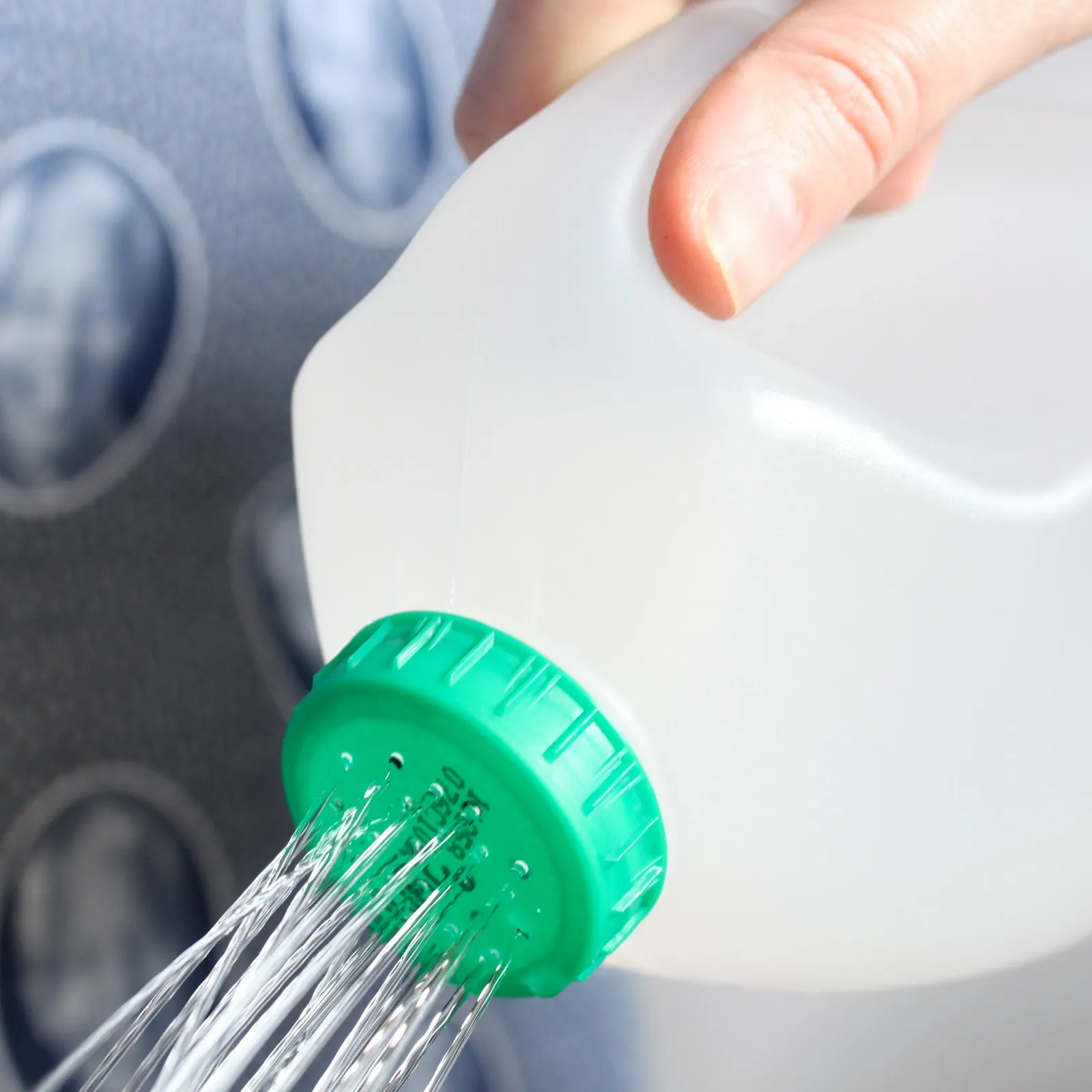
Sustainable Gardening: Make Your Own DIY Watering Can
Introduction to DIY Watering Cans
In the world of gardening, a reliable watering can is a must-have. Yet, not all watering cans are equal. DIY watering cans are rising in popularity, and for good reason. They reflect a desire to be sustainable while giving a personal touch to gardening tools. In this blog, we discuss the why’s and how’s of making your own watering can. This not only supports eco-friendly practices but also saves money. Whether you’re an avid gardener or just starting out, you’ll find that creating a diy watering can is a rewarding project. It’s simple, efficient, and a great step towards sustainable living.
The Benefits of a Homemade Watering Can
Creating a diy watering can brings several advantages to gardening enthusiasts. The first benefit is cost-effectiveness. Buying a brand-new watering can may be costly, but making one at home can significantly reduce expenses. You often use materials already at hand, avoiding an extra trip to the store. Another advantage is customization. You can tailor the size, shape, and flow of your homemade can to suit the specific needs of your garden. This personalization ensures that plants receive the right amount of water without waste.
Moreover, making a diy watering can fosters creativity. It allows you to repurpose common household items, turning them into functional garden tools. This process can be a fun, creative project for the whole family, combining craft time with learning about sustainability. Additionally, homemade cans often prove to be more durable than their store-bought counterparts. When you select materials and construct the can yourself, you control the quality and craft it to last.
Lastly, there’s the sustainability factor. By choosing to craft your own watering can, you contribute to reducing plastic waste and promoting a more eco-friendly gardening approach. You give a second life to objects that might otherwise end up in a landfill, thus leaving a lighter ecological footprint. In summary, the advantages of building a homemade watering can are clear: it’s cost-saving, customizable, creative, durable, and sustainable—a true win-win for gardeners and the environment alike.
Materials Needed for Your DIY Watering Can
When embarking on your adventure to create a diy watering can, you’ll need some basic materials. The beauty of this project is its flexibility—you can often use items that are readily available in your home. Below is a list of common materials you might consider:
- Empty container: Look for plastic bottles, milk jugs, or detergent containers. Make sure they are clean.
- Nails or screws: You will need these to poke holes and create the spout.
- Hammer or drill: These tools will help you punch holes accurately.
- Sharp knife or scissors: Use these to cut the container if needed.
- Permanent marker: This is helpful to mark where you will create openings.
- Sandpaper: Smooth out any rough edges after cutting your container.
- Decorative materials: Feel free to get creative with paints, tapes, or stickers.
- Glue or waterproof sealant: These might be necessary if you need to attach parts.
Remember, the aim is to customize your diy watering can to meet your garden’s needs, so feel free to adapt this list. By gathering these simple materials, you are not only preparing to water your plants but also taking a step towards sustainable living.
Step-by-Step Guide to Making a Simple Watering Can
Crafting a diy watering can is straightforward and rewarding. Here are the steps you can follow to make a simple, effective watering tool for your garden:
- Choose Your Container: Select an empty bottle or jug that will serve as the body of your watering can. Ensure it’s clean and holds enough water for your needs.
- Create the Spout Holes: Use a marker to indicate where you want your water spout holes to be. With a hammer and nail or drill, make several holes in the lid of the container.
- Cut an Opening: If your container needs a larger opening for filling, use a sharp knife or scissors. Cut carefully and always keep safety in mind.
- Smooth Edges: After any cutting, there might be rough edges. Gently sand these down to prevent any accidental cuts during use.
- Decorate (Optional): Bring out your creative side. Decorate your diy watering can with paint, tape, or stickers. This gives it a personal touch.
- Seal Any Joints: If you attach new parts, like a handle, use glue or a waterproof sealant. This ensures no leaks when watering.
- Test Your Watering Can: Fill it with water and test to see how it pours. Make sure the flow is gentle and suitable for your plants.
- Adjust if Necessary: After testing, you might need to widen holes or fix leaks. Make adjustments as needed for the perfect watering can.
Remember, the goal is to have a functional, efficient diy watering can that serves your garden’s watering needs while being mindful of the environment.
Creative Ideas for Upcycling Items into Watering Cans
Transforming everyday objects into diy watering cans doesn’t just save money, it sparks creativity. Let’s explore some inventive ideas for upcycling items you might find around the house into functional garden tools:
- Milk Jugs: A gallon-sized milk jug makes an ideal watering can. Simply poke holes in the lid for a makeshift spout.
- Detergent Bottles: Their sturdy handles and durable material are perfect. Cut the bottom off for an instant can.
- Soda Bottles: Smaller plants appreciate a gentle shower from a pierced soda bottle.
- Oil Containers: Cleaned out, these can become watering cans with a long, narrow spout.
- Large Yogurt Containers: Add a handle and you’ve got a lightweight watering tool.
- Old Teapots: For a whimsical look, drill holes in the spout of a retired teapot.
As you select an item to upcycle, consider the size and type of plants you’re watering. Customize the number and size of holes in the spout for a gentle or heavy flow. Use what you have and have fun with your diy project. Your plants and the planet will thank you for it.
Tips for Maintaining Your DIY Watering Can
Once you have crafted your own diy watering can, keeping it in good condition is key. Here are some straightforward tips to ensure your watering can lasts longer:
- Regular Cleaning: Rinse your can after each use. This prevents dirt build-up and keeps the water flow clear.
- Check for Leaks: Examine your can regularly for any leaks. Patch them up quickly with waterproof sealant to prevent water loss.
- Store Properly: Keep your diy watering can in a cool, dry place when not in use. Avoid leaving it in direct sunlight as some materials may degrade.
- Handle with Care: Treat your can gently. Avoid dropping it or rough handling that could cause damage.
- Periodic Upgrades: Over time, the holes in your can may enlarge or change shape. Fix them with a small piece of wire mesh or a few layers of clear tape as needed.
- Decoration Maintenance: If you’ve decorated your can, check for any peeling or fading. Touch up the paint or stickers to keep it looking fresh.
By following these tips, your homemade watering can will remain functional and visually appealing for many seasons. It will also stay true to your sustainable gardening goals by extending the lifespan of repurposed items.
Environmental Impact of Using Recycled Materials for Garden Tools
Using recycled materials for garden tools like a diy watering can has a significant positive impact on the environment. Here are some key environmental benefits:
- Reduces Waste: Upcycling items into garden tools prevents them from ending up in landfills. This helps lower the amount of waste impacting our planet.
- Conserves Resources: Crafting tools from existing materials means fewer new resources are used. This reduces the demand for manufacturing and raw materials.
- Lowers Pollution: Less manufacturing of new garden tools translates to less pollution. This includes emissions from factories and the fuel used to transport goods.
- Promotes Biodiversity: By choosing eco-friendly practices, you support a healthier ecosystem. Recycled tools do not release harmful chemicals into the soil, protecting local flora and fauna.
- Educates on Sustainability: Using recycled materials sets an example. It shows others the value of resourcefulness and environmental stewardship.
- Encourages Innovation: Turning trash into tools sparks creativity and innovation. It encourages finding new ways to solve old problems.
In summary, making garden tools from recycled materials like a diy watering can, contributes to a healthier planet. It minimizes waste, saves resources, decreases pollution, and enhances biodiversity. Moreover, it teaches valuable lessons on sustainable living and fosters innovative thinking.
Conclusion: Embracing Sustainability in Gardening Practices
Creating a diy watering can is more than a gardening task. It is a step towards living sustainably. By making your own watering can, you show care for the environment. You save money, reduce waste, and get creative in the process. Using everyday items for your garden keeps plastics out of landfills. It also cuts down on the need to produce new plastic goods.
The process is simple and adaptable. Whether you’re using a milk jug or a soda bottle, you can make a diy watering can that meets your gardening needs. Moreover, it encourages resourcefulness and teaches future generations the importance of sustainability. Everyone can play a part in making gardening a greener activity.
Keeping your homemade watering can in top shape is straightforward. Regular cleaning and proper storage extend its life. Timely repairs and touch-ups on decorations keep it functional and attractive. Through these small actions, you contribute to a larger cause. You help preserve the planet for future generations.
In conclusion, the journey to create a diy watering can is rewarding. It promotes a sustainable mindset that goes beyond the garden. It shows that we can all make a difference with small, thoughtful actions. Embrace the ethos of sustainability in your gardening practices. Together we can create a greener, more vibrant world.
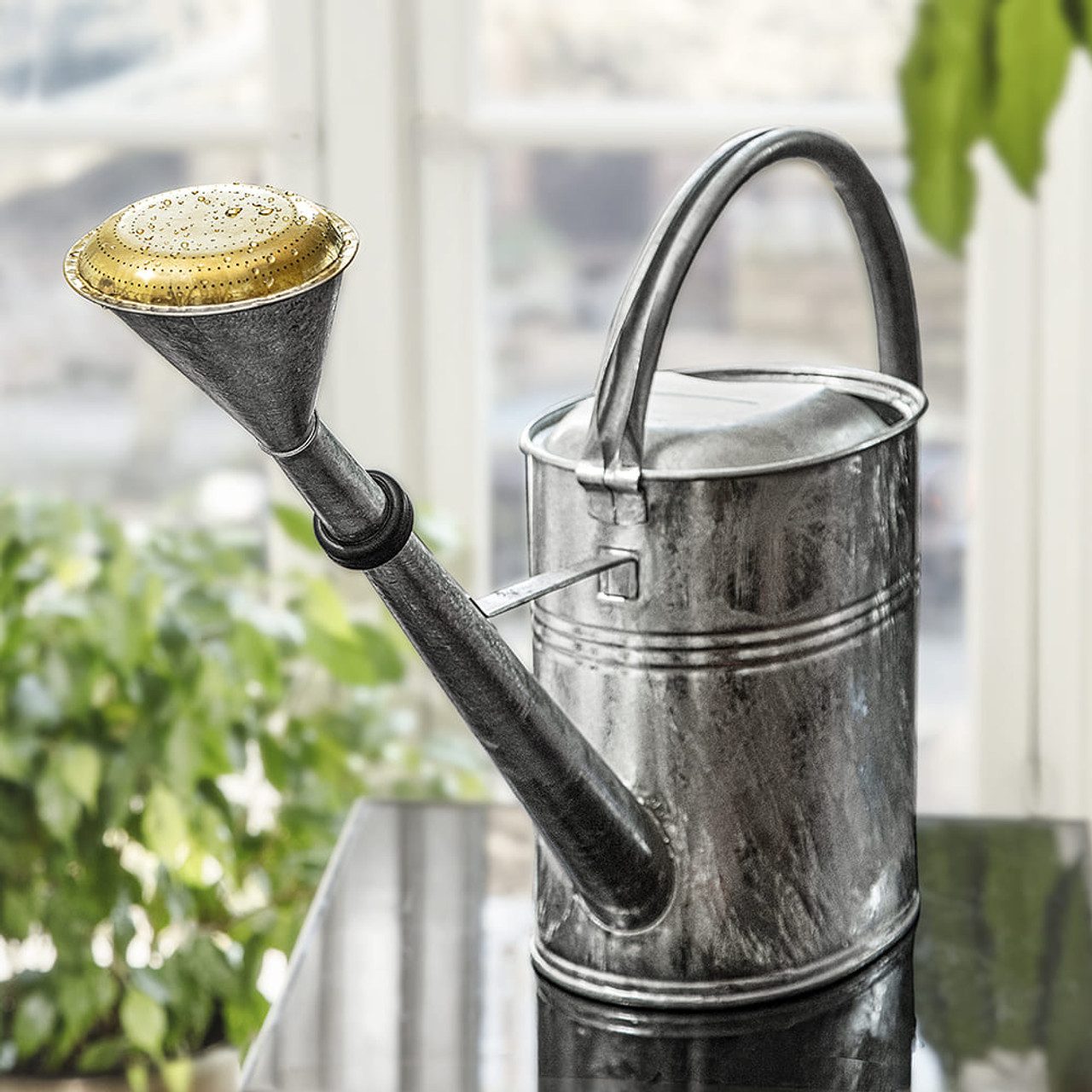
Choosing the Ideal 2 Gallon Watering Can for Your Garden
The Importance of the Right Watering Can Size
Finding the ideal size for a watering can is crucial for garden maintenance. The 2 gallon watering can strikes a balance between capacity and manageability. It’s large enough to hydrate a medium-sized garden without frequent refills. Yet, it’s not so bulky that it becomes hard to carry.
A can that’s too big can result in water waste or overwatering. This can harm plant roots and soil health. A too-small can might not give plants enough water. It can also make gardening tasks time-consuming with constant refills.
The 2 gallon watering can is especially fitting for gardeners who need to water several plants at once. It’s also ideal for those who prefer longer watering sessions, lessening the back-and-forth to a water source.
Opting for this size can also mean fewer trips and saved time. It provides just the right amount of water for most small to medium-size garden beds. Always check your garden size and plant needs before deciding on the perfect watering can size. This ensures your plants thrive and you enjoy gardening more.
Key Features to Look for in a 2 Gallon Watering Can
When selecting a 2 gallon watering can, certain features can make a big difference. First, consider the balance and weight distribution. A well-designed can should feel stable and comfortable to carry, even when it’s full. Look for a large, looped handle that offers a firm grip and allows for one-handed operation.
Next, pay attention to the spout. A good spout should have a removable rose attachment. This helps to control the water flow and can prevent overwatering. Some cans come with an adjustable nozzle for a more precise water stream, which is handy for targeting the base of plants.
The material of the watering can also matters. Plastics are lightweight and often more affordable, while metal cans are more robust and have a classic look. Whichever material you choose, ensure it is UV-resistant to prevent cracking and fading.
Durability is crucial, so look for cans with reinforced or rust-proof design elements if you’re considering metal. For plastic cans, check the thickness and sturdiness of the plastic.
Lastly, consider the filling hole’s size. A larger opening means it’s easier to fill and add water-soluble fertilizers. With the right 2 gallon watering can features, garden maintenance becomes more effective and enjoyable.
Material Choices for 2 Gallon Watering Cans
When choosing your 2 gallon watering can, material is a key factor. Each material offers unique benefits that cater to different gardening needs. Here’s a look at the most common materials:
Plastic: Plastic cans are lightweight and easy to handle. They won’t rust and come in various colors. When selecting a plastic can, make sure it is UV-resistant to avoid damage from sunlight. Look for a design that is robust to ensure it can handle the strain of regular use.
Metal: Metal watering cans are durable and have a traditional look. They often last longer but are heavier, especially when full. Go for a galvanized or stainless steel model to prevent rust. Remember, metal cans might require more strength to carry around.
Ceramic: Ceramic cans are less common but add an elegant touch. They are heavier and more decorative, best suited for indoor use or small patio gardens. Be careful, as they can chip or break if dropped.
Consider sustainability as well. More gardeners now choose cans made from recycled materials. This helps reduce waste and supports environmental conservation. Make sure to recycle your plastic can at the end of its life.
Each material has its pros and cons. Think about your garden’s needs and your comfort. Your choice should match your gardening style, frequency of watering, and physical ability to handle the can’s weight. With the right material, your 2 gallon watering can will be a valuable tool in your gardening arsenal.
Ergonomic Design Considerations for Comfort and Efficiency
When choosing a 2 gallon watering can, the ergonomic design is a critical aspect. An ergonomically designed can reduce the strain on your body, making watering not just easier, but also more efficient. Here are some elements to consider:
Handle Placement and Shape: Ensure the handle is at a comfortable angle. This can lessen wrist strain. Look for a handle that is easy to grip, ideally with a soft material or design that conforms to your hand.
Weight Distribution: A can should distribute weight evenly when full. This balance helps prevent muscle fatigue. The design should make it feel lighter than it is, ensuring comfort even during prolonged use.
Height and Width: Check the height and width of the can. These dimensions should allow for easy storage. They should also not impede your ability to maneuver around the garden.
Remember, a comfortable can makes gardening more pleasurable. It should let you water your plants without causing discomfort or exerting too much effort. That way, you can focus on the health of your plants, enjoying the tranquil experience of tending to your garden.
Drip-Free Spouts and Water Flow Control Options
When looking for a 2 gallon watering can, efficient water flow control is essential. Here’s why:
Drip-Free Spouts: Cans with drip-free spouts ensure there’s no water wasted. Every drop goes to your plants, not on the ground. Look for cans with a spout design that promises no drips or leaks.
Flow Control: Watering cans with adjustable flow control let you cater to each plant’s needs. Some plants need a gentle shower, others a steady stream. A can with a flow control option can do both. This versatility is key to effective gardening.
Rose Attachments: Removable rose attachments distribute water in a gentle pattern. This is similar to rain and is ideal for most garden plants. With a rose attachment, you avoid heavy watering that can disturb the soil or harm delicate plants.
Adjustable Nozzles: Some watering cans feature nozzles that adjust from a fine mist to a strong stream. This feature helps you water plants at different stages of growth, from seedlings to mature plants.
It’s clear that having proper water flow control can make a significant difference. Make sure your 2 gallon watering can comes with features that allow you to manage how much and how quickly water is distributed. This way, you can tend to your garden with precision and care.
The Aesthetic Appeal of 2 Gallon Watering Cans
The look of a 2 gallon watering can matters as much as its function. A stylish can add charm to your gardening routine. Here’s what to remember for aesthetic appeal:
Design and Colors: Modern or traditional designs both can enhance your garden’s look. Bold colors pop; classic ones blend in.
Finishes: Metallic shines catch the eye. Matte finishes offer an understated elegance.
Patterns and Embellishments: Floral patterns or artistic details can make a watering can a decorative piece.
When you select a can, visualize it in your garden. A good-looking 2 gallon watering can is not just a tool. It’s part of your garden’s overall beauty.
Choose one that reflects your style and adds to the joy of gardening. A can that pleases the eye can make watering an experience to look forward to.
Durability and Longevity of Different Watering Can Types
The durability of a 2 gallon watering can is key for gardeners. A can that lasts spares you from frequent replacements and extra cost. Here’s what affects the longevity of different watering can types:
Plastic Cans: These are resistant to rust and often cost less. But, they might crack if mishandled. Look for high-quality, UV-resistant plastic to ensure they last longer.
Metal Cans: Options like galvanized or stainless steel withstand time well. They are prone to rust if not properly coated or cared for. A rust-proof metal watering can will serve you for years.
Ceramic Cans: Even though elegant, they can break easily. They’re best for gentle use in small, protected spaces.
Remember, proper care extends the life of any can. Store them indoors when not in use. Avoid leaving them out in harsh weather. This ensures they stay in good shape, ready for watering season after season.
Choose a 2 gallon watering can that mixes durability with your other needs. Consider how often you water and the care you can give to the can. A well-chosen, durable can becomes a trusty companion for your gardening journey.
Top Picks: Recommended 2 Gallon Watering Cans for Gardeners
With numerous options available, choosing the ideal 2 gallon watering can can be daunting. To ease your decision-making, we have compiled a list of top picks that blend function, comfort, and style. These recommendations cater to a range of gardening preferences.
- The Balanced Gardener’s Delight: Look for a can with a comfortable grip and even weight distribution. It should feel good in your hand and not cause strain, even when full.
- The Style-Conscious Gardener’s Choice: If the look is as important as function, go for a can with a sleek design and a vibrant color that stands out in your garden.
- The Eco-Friendly Gardener’s Pick: For those mindful of sustainability, cans made from recycled materials are the way to go. They offer durability and help conserve the environment.
- The Practical Gardener’s Favorite: A can with a drip-free spout and adjustable flow control is a must. This ensures efficient watering and saves time.
- The Classic Gardener’s Option: A durable metal can, with either a galvanized or stainless-steel finish, combines longevity with a timeless look.
- The Innovative Gardener’s Selection: Some gardeners prefer cutting-edge designs. Look for cans with ergonomic features that promise ease and reduced effort.
When making your pick, remember to consider your unique gardening needs. A 2 gallon watering can should be a helpful, long-lasting tool, not a hindrance. With the right can, you can look forward to many seasons of happy gardening.
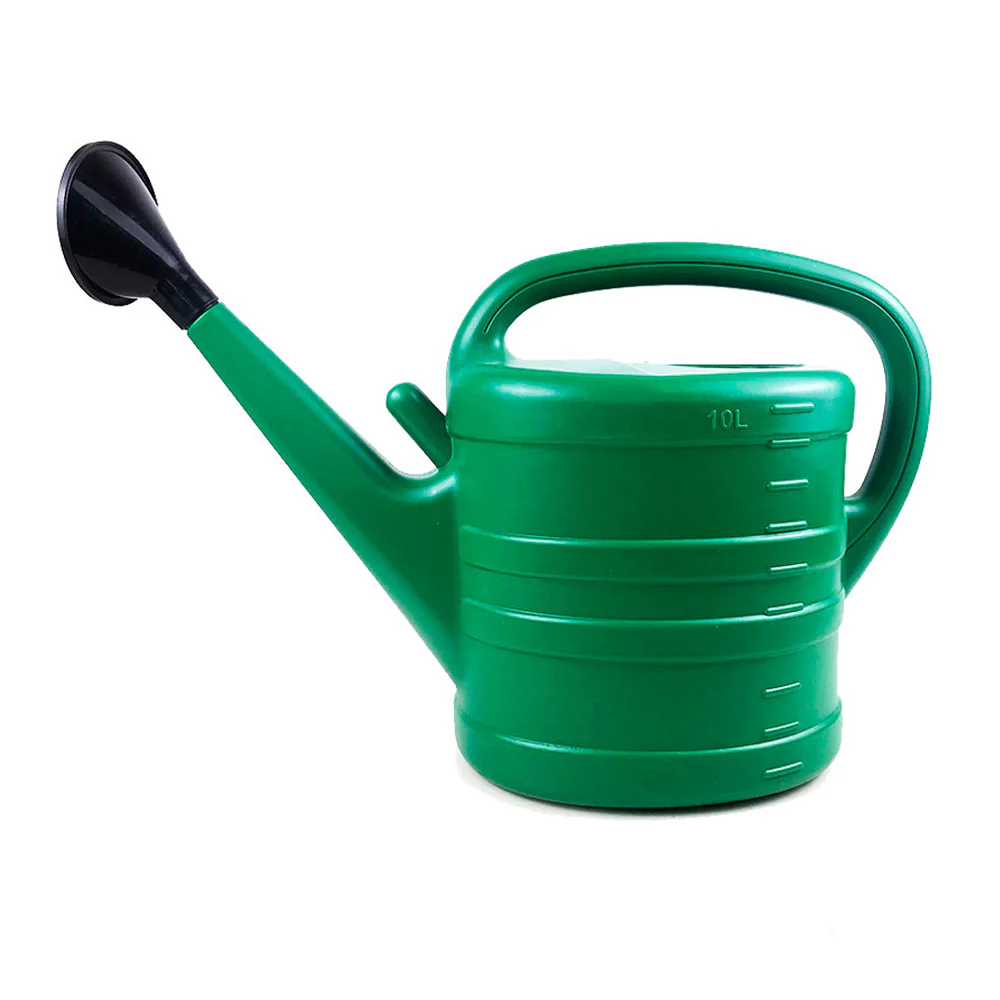
Sustainable Gardening: Choosing the Right Plastic Watering Can
Introduction to Sustainable Gardening and Watering Cans
Gardening in a way that respects the environment is key in today’s eco-conscious world. Sustainable gardening involves using resources thoughtfully. This includes conserving water and choosing garden tools, like a plastic watering can, that have less impact on our planet. A watering can is essential for any gardener. It helps control the amount of water you give to plants. It ensures you water them at the roots where they need it most. But not every plastic watering can supports sustainable practices. It’s important to select one that is durable, made from recyclable materials, and designed for a long life. In this blog, we’ll explore how to choose the right plastic watering can for your sustainable garden. We’ll consider factors such as material choice, design, and eco-friendliness. Our goal is to arm you with the information needed to make a greener choice. A choice that aligns with your values and the well-being of your garden.
The Importance of Material Choice in Watering Cans
The material of a plastic watering can matters for sustainability. It determines the can’s life span, recyclability, and eco-friendliness. When choosing a watering can, look for high-quality, recyclable plastics. These materials often come from post-consumer waste. This means fewer new resources go into making your gardening tool. Think about the can’s durability too. A long-lasting can reduces the need for frequent replacements. This saves resources and cuts down on waste. UV-resistant plastic is a good pick. It stands up well to sun exposure and will not degrade as quickly as other plastics. Some cans may also have eco-certifications. These labels can guide you to materials that meet strict environmental standards. In short, the best material for a plastic watering can is durable, recyclable, and eco-conscious.
Features to Look for in a Plastic Watering Can
When selecting a plastic watering can for your garden, several features are essential for sustainability and ease of use. Here’s what to keep in mind:
Capacity and Size: Opt for a can that matches your garden’s size. A larger garden may need a can with more capacity to avoid frequent refills. However, remember that a full, large can be heavy.
Spout Design: Look for a can with a spout that fits your watering needs. Long spouts target water directly to the roots, while shorter ones might be better for pots.
Weight and Balance: Even when full, the can should be easy to carry and tilt. A well-balanced design helps prevent water from spilling and makes it easier to handle.
Durability: A can made from durable plastic will last many seasons. This means less waste and fewer replacements. Make sure the can is resistant to cracks and fading.
Eco-Friendly Features: Search for cans made from eco-friendly plastics. Such plastics could be biodegradable or made from recycled materials.
Detachable Heads: Some cans come with detachable heads for different watering patterns. This feature can help conserve water by applying it precisely where needed.
Incorporating these features in your plastic watering can selection process will not only benefit your garden but also align with sustainable gardening practices.
Eco-Friendly Alternatives to Traditional Plastic
When looking for a plastic watering can, consider eco-friendly alternatives to traditional plastics. These options can help reduce your environmental footprint while still providing the functionality you need for sustainable gardening. Here are a few options:
- Bioplastics: These are made from natural materials such as corn starch. They break down faster than traditional plastics.
- Recycled Plastics: Cans made from recycled plastics use less energy and resources than new plastics.
- Sustainable Production: Seek out brands that use renewable energy in their production processes.
- Long Life Cycle Products: Choose cans designed to last longer to avoid frequent replacements.
Remember that it’s not just the material but also the production method and life cycle that matter. Eco-friendly alternatives often come with certifications. Look for those as a sign of a greener product. By choosing these alternatives, you take an extra step toward sustainable gardening practices.
How to Recycle and Reuse Plastic Watering Cans
Recycling and reusing plastic watering cans are key to sustainable gardening. When your can reaches the end of its life, don’t just throw it away. Check local recycling programs for guidelines on recycling plastics. Look for symbols on the can to identify its plastic type. This helps ensure it goes into the correct recycling stream.
For reusing, think creatively. A can with a broken spout can still hold tools or compost. You can even turn it into a planter, giving it a new life in your garden. Drill holes in the bottom for drainage, and you’re set. If the can is intact, use it for non-gardening tasks. It can carry cleaning supplies or hold ice for outdoor parties.
Remember, reusing often is better than recycling. It cuts down on the energy used to break down and remake products. Try to fix your can if it’s damaged. Use waterproof glue for small cracks. Replace the head or spout if they’re the only broken parts. Reusing extends the life of the can and reduces waste. By doing so, you support both your garden and the environment.
The Role of Design and Ergonomics
When choosing a plastic watering can, design and ergonomics play a crucial role. Look for features that enhance comfort and efficiency.
Handle Comfort: Select a watering can with a comfortable handle. It should fit well in your hand and not cause strain during use.
Balance: A well-designed can should feel balanced, whether it’s full or empty. Proper balance reduces the effort needed to carry and pour.
Accessibility: The can should allow for easy filling from a tap or rain barrel. A wide opening helps avoid spills and makes cleaning simpler.
Ease of Pouring: A watering can with an ergonomically designed spout is key. It should pour smoothly without requiring awkward movements or positions.
Overall Shape: Look for a can with a shape that is both functional and attractive. It should be easy to store and should not tip over easily.
Good design and ergonomics in a plastic watering can lead to a better gardening experience. They also promote sustainable practices by making the tool easier to use repeatedly. This helps avoid the need for frequent replacement due to discomfort or poor performance.
Popular Types and Brands of Plastic Watering Cans
When shopping for a plastic watering can, you’ll find various types suited for different gardening needs. Here are popular ones to consider:
- Traditional Cans: These usually have a classic design with a large handle and a long spout.
- Mini Cans: Perfect for indoor plants or small balcony gardens, they are lightweight and easy to store.
- Professional Cans: Designed for heavy use, they can handle larger volumes and often come with sturdier handles.
- Collapsible Cans: Great for space-saving, these cans can be folded or collapsed when not in use.
As for brands, there are several reputable ones known for their quality and commitment to sustainability. Customers often trust these brands:
- Haws: A long-standing brand known for high-quality cans that come in various styles and sizes.
- Fiskars: Offers innovative and durable garden tools, including eco-friendly watering cans.
- Scheurich: A German brand that produces aesthetically pleasing cans often made from recycled plastics.
- Oxo: Known for ergonomic designs, their watering cans are user-friendly and often feature a rotating spout.
Each brand has its strengths, ranging from ergonomic design to sustainability. It pays to research and choose a brand that aligns with your sustainable gardening values. Look for cans that are built to last, made from recyclable materials, and comfortable to use. This will ensure you invest in a tool that serves your garden well and supports the environment.
Tips for Maintaining and Caring for Your Watering Can
Proper care for your plastic watering can extends its life and supports sustainability. Here are some maintenance tips:
Regular Cleaning: Empty the can after use and rinse it well. This prevents algae growth and blockages.
Safe Storage: Keep your can out of direct sunlight when not in use. UV rays can weaken the plastic over time.
Inspect for Damage: Check regularly for cracks or leaks. Early detection means easier repairs and less chance of needing a full replacement.
Gentle Use: Avoid dragging your can on rough surfaces. This can lead to scratches and punctures.
Handle with Care: Lift and carry your can using both hands when full. This prevents handle stress and breakage.
Sustainable Repairs: Use eco-friendly glues or tape for minor fixes. This keeps the can recyclable at its end of life.
By following these tips, your plastic watering can will remain a valuable tool in your sustainable gardening toolkit for years.
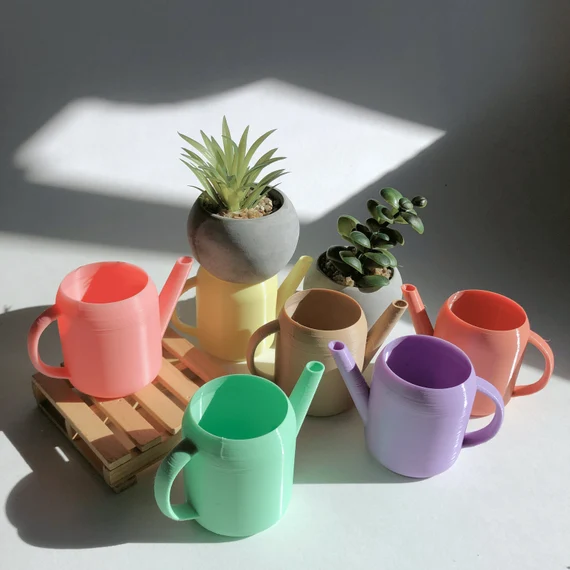
The Mini Watering Can: Perfect for Indoor Plants
The Importance of Proper Watering for Indoor Plants
Proper watering is vital for indoor plants. It promotes healthy root development and prevents common issues. Overwatering can lead to root rot, while under-watering can stress plants. This can stunt growth or even kill the plant. A mini watering can helps control the amount of water given to each plant. Its small size allows for precise watering, getting just the right amount to the root zone. This tool is especially handy for plants that need a consistent moisture level. Examples include ferns and African violets. A consistent watering schedule also wards off pests and diseases. It strikes a balance that is crucial for indoor plant care. Regular use of a mini watering can supports strong plant structure and vibrant foliage. In summary, a mini watering can is a simple but essential tool for plant owners. It ensures indoor plants thrive in their home environment.
Types of Mini Watering Cans
When it comes to choosing a mini watering can, you’ll find a variety of types available. These differing types cater to the diverse needs of both the plants and the plant owners. Selecting the suitable one can make a significant difference in how effectively you water your indoor plants.
Materials Used in Mini Watering Cans
Mini watering cans come in different materials, each with its pros and cons. Popular materials include:
- Plastic: Lightweight and affordable, plastic watering cans are great for those who have many plants to water. They don’t rust, which is a plus.
- Metal: Metal cans often have a classic look. They are durable and heavy-duty. However, they may be heavier and are prone to rusting unless they’re stainless steel.
- Ceramic: These are attractive and often come in decorative designs. They’re heavier than plastic and are fragile.
- Glass: A glass watering can be a stylish option. It’s perfect for delicate watering needs but is breakable, so it requires careful handling.
Each material has its lifecycle and environmental impact, which might influence your choice.
Designs and Features of Mini Watering Cans
The design and features of a mini watering can affect how well it performs. Key features include:
- Long spouts: Long, narrow spouts help with precise watering, getting water right to the roots where it’s needed.
- Detachable heads: Some cans have detachable heads for a gentle shower, ideal for young or delicate plants.
- Handles: Look for a comfortable handle design, as it makes the watering can easier to carry and pour without straining your wrist.
- Measurement marks: Some cans have marks that indicate the volume of water, helping you track how much water you’re giving to each plant.
Incorporating these features into your choice will enhance the watering experience and the health of your indoor plants. By considering the material and design features of a mini watering can, you can ensure precise and efficient watering every time.
How to Choose the Right Mini Watering Can
Choosing the right mini watering can is key to plant care. Consider size, spout, and design for the best fit.
Size and Capacity
The size of your mini watering can should match your needs. If you have many small plants, a smaller can will do. For those with larger plants or more to water, go for a bigger capacity. This helps avoid frequent refills.
Spout Length and Shape
The spout’s length and shape are crucial for reaching into tight spots. A long spout helps target water to the plant’s base without wetting foliage. Go for a narrow spout for accuracy. A sprinkler head is good for a gentle shower on delicate plants.
Ergonomic Design and Ease of Use
Comfort matters when watering plants. Look for a mini watering can with a comfy handle. This will make it easy to carry and pour. Also, choose a design that is easy to tilt and control to reduce wrist strain.
Benefits of Using a Mini Watering Can
A mini watering can offers several benefits for indoor gardening. Its design and size bring convenience and precision to the routine of watering houseplants.
Precision Watering and Avoiding Overwatering
One of the top benefits is precision watering. The mini watering can’s small spout delivers water exactly where plants need it. This avoids the common problem of overwatering. With a mini watering can, you give each plant the right amount of water. This is key to preventing root rot and other water-related issues.
Accessibility for Tight Spaces
Another advantage is easy access to tight spaces. Whether between crowded pots or in a densely packed plant stand, a mini watering can reaches in with ease. Its compact size makes watering in challenging spots a breeze.
Enhancing Plant Health and Growth
A mini watering can help keep your indoor plants healthy and growing well. By providing just the right amount of water directly to the roots, it promotes stronger growth. Your plants will show their appreciation with lush leaves and vibrant blooms.
Tips for Maintaining Your Mini Watering Can
To make the most of your mini watering can, it’s important to maintain it well. Proper maintenance ensures it works efficiently and lasts longer. Here are some tips to keep it in top shape:
Cleaning and Storage
After each use, empty the mini watering can. This prevents stagnant water, which can cause mold and rust. Rinse it inside and out with clean water. For a deeper clean, use a mild soap and a soft brush. Dry it thoroughly before storing. Store the can in a dry place to avoid moisture build-up. If it’s metal, this will prevent rusting. For long-term storage, a cabinet or a shelf keeps it dust-free.
Routine Checks for Leaks or Damage
Regularly inspect your mini watering can for leaks or damage. Small cracks can turn into bigger leaks over time. Metal cans can get dents or rust spots. If you find a leak, fix it right away to avoid water wastage. Check the spout for clogs. Use a thin wire to remove any debris. Check the handle to make sure it’s secure. Tighten any loose parts. These simple checks help prolong the life of your mini watering can.
Creative Uses for Mini Watering Cans Beyond Watering
A mini watering can is more than just a tool for hydration. Its usefulness extends beyond watering, adding value in other surprising ways. Explore creative uses to get the most out of this versatile tool.
As Plant Humidifiers
Mini watering cans can double as plant humidifiers. This is helpful for plants that thrive in moist environments. Simply fill your can with water, and gently sprinkle your plants. The fine mist mimics a natural humid setting. This acts as a humidity boost, especially during dry seasons. It can keep tropical plants like orchids and ferns happy.
Decorative Purposes
Beyond their functionality, mini watering cans are also charming decor items. Use them to add a touch of greenery to your living space. They can hold cut flowers, creating a quaint and rustic vase. Place them on shelves or tables for a homey feel. You can even paint and personalize cans to match your decor. This way, they serve as eye-catching pieces that reflect your personal style. Mini watering cans are popular among plant enthusiasts, urban gardeners, and those with limited space for gardening. They make an attractive and functional addition to any plant care routine.
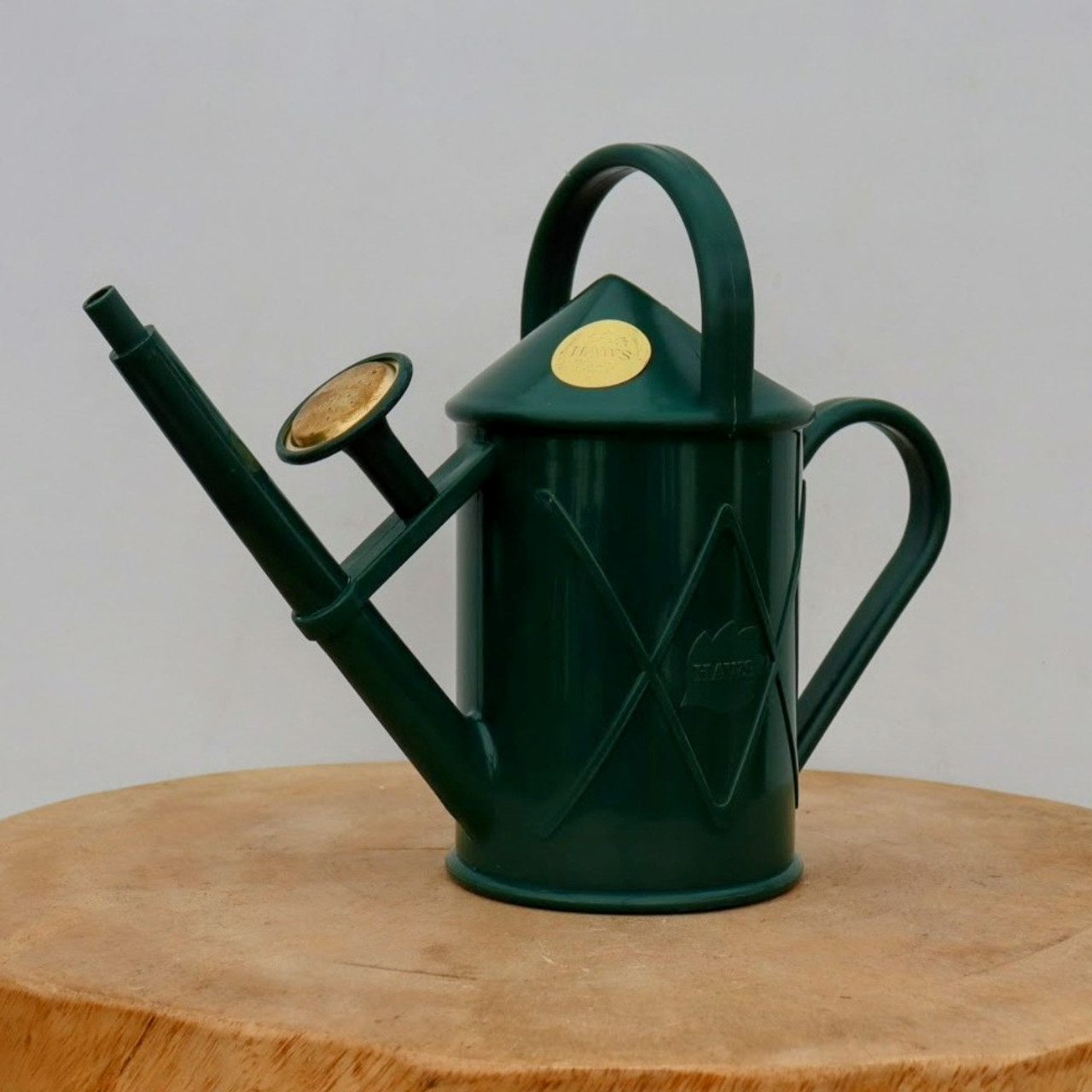
Mastering Bonsai Watering Can: Selecting the Right Can
Introduction to Bonsai Watering Essentials
Bonsai watering is both an art and a science. It’s crucial to the health and beauty of your bonsai trees. Each bonsai has unique watering needs based on many factors. These include species, pot size, soil composition, and environmental conditions. Understanding these needs is the first step to thriving bonsai. To begin with, use room temperature water for your bonsai trees. Cold water can shock their roots and slow growth. Proper bonsai watering isn’t just about frequency; it’s about method too. Using the right bonsai watering can helps you mimic natural rainfall. This is key to good health for your bonsai.
Monitoring your bonsai’s soil moisture is essential. The goal is to keep the soil damp but not soggy. Overwatering can cause root rot, which is harmful to your bonsai. Let the topsoil dry out slightly before watering again. This encourages healthy root growth. Remember, bonsai watering is not a set routine. It will vary with the seasons, weather, and indoor conditions if kept inside. Learning to read your bonsai’s needs is vital. Over time, you’ll develop a sense for when and how to water effectively. Selecting the right bonsai watering can is a tool to aid you in providing the best care for your bonsai trees.
The Importance of Choosing the Right Watering Can
Choosing the right bonsai watering can is vital for your tree’s health. A good can controls water flow to match your bonsai’s needs. This prevents over-soaking or under-watering. A proper can also ensures a gentle pour. Strong water streams can disturb the soil and harm delicate roots. Furthermore, it helps you reach all parts of the bonsai without strain. An unfit can makes watering difficult and might damage the tree. Lastly, different cans suit different environments. Outdoor bonsais need robust cans while indoor ones require smaller, more precise ones. Your choice can affect the bonsai’s growth and vitality. Always select a can that compliments your bonsai watering routine.
Types of Bonsai Watering Cans
When it comes to bonsai watering cans, there is a variety to choose from. Each type has different features to meet the needs of your bonsai trees and the conditions they are in. Let’s look at some of the common types of bonsai watering cans that could enhance your watering routine.
- Plastic Watering Cans: Lightweight and affordable, plastic cans are a popular choice. They come in various sizes, which makes them versatile. They work well for indoor bonsai trees but may not endure long-term use outdoors.
- Metal Watering Cans: Usually made from zinc or copper, metal cans are durable. They’re great for outdoor use and can withstand exposure to elements. Their weight makes them stable but may be tiring to handle for some.
- Ceramic Watering Cans: These are often decorative and can be a beautiful addition to your bonsai collection. Ceramic cans are heavy, which reduces the risk of tipping over. However, they are fragile and need careful handling.
- Long-Spout Watering Cans: The long spout allows for precise watering, particularly in dense foliage. It helps avoid water wastage and ensures moisture reaches the soil, not just the leaves.
- Balanced Watering Cans: Designed for comfort, they help reduce arm fatigue during watering. This design allows for better control and a steady stream of water.
Selecting the right bonsai watering can involves considering the needs of your bonsai and your personal comfort. Each type has its benefits. Considering factors such as the size of your bonsai, where you keep it, and how often you water will guide your choice.
Key Features to Look for in a Bonsai Watering Can
When hunting for the ideal watering can, there are several key features to consider:
- Adjustable Flow Rate: Look for a can that allows you to control the water flow. This makes it easier to match the needs of your bonsai.
- Long and Narrow Spout: A spout that is both long and narrow offers precision. It helps direct water right to the soil without splashing the leaves.
- Ergonomic Handle: Make sure the handle is comfortable to hold. An ergonomic design will help prevent hand fatigue during extended watering sessions.
- Size and Capacity: Choose a can that holds enough water for your bonsai but is not too heavy. A can that is too large will make watering awkward.
- Material Quality: Select a material that will last and suit your environment. Metal cans resist weather, while plastic ones are lightweight.
- Detachable Rose: Some cans come with a rose that can be removed. This is useful for gentle watering or for a stronger stream when needed.
Incorporate these features into your choice. They make watering efficient and keep your bonsai in top condition. Balance the need for functionality with your personal comfort and the specific needs of your bonsai trees. With the right bonsai watering can, nurturing your bonsai becomes a simpler and more enjoyable task.
How to Use a Bonsai Watering Can Effectively
When it comes to using a bonsai watering can, technique is everything. To ensure your bonsai receives the right amount of water without damage, follow these steps:
- Fill the Can: Start by filling your watering can with room temperature water.
- Begin at the Soil: Aim the spout at the soil, not the leaves. This reduces evaporation and directs water where needed.
- Use a Gentle Flow: Adjust the nozzle for a gentle flow to avoid disturbing the soil or damaging roots.
- Water Evenly: Move around the tree, watering the soil evenly until it’s damp all around.
- Allow Drainage: After watering, let excess water drain out. Bonsai pots should have holes for this purpose.
- Check Moisture: After a few minutes, check the soil. If it’s still not moist, you may need to water again.
- Avoid Watering at Night: Water your bonsai in the morning. This gives the soil time to dry out during the day.
By following these simple steps, you can use your bonsai watering can effectively, keeping your bonsai hydrated and healthy.
Maintenance and Care for Bonsai Watering Cans
To keep your bonsai watering can in top shape, follow these maintenance tips:
- Clean Regularly: After each use, rinse your can to remove dirt and debris. This helps prevent clogs and ensures clean water for your bonsai.
- Dry After Cleaning: Wipe your can or let it air dry to avoid rust, especially if it’s metal. Plastic and ceramic cans also benefit from drying to prevent mold.
- Store Properly: Keep your can in a dry place away from direct sunlight. This will protect it from the elements and extend its life.
- Check for Damage: Look for any signs of wear, like dents, rust, or cracks. Fix small issues before they become bigger problems.
- Regular Inspection: Examine the spout and rose for blockages. Clear them out to maintain a smooth water flow.
By taking care of your bonsai watering can, you ensure your bonsai trees get the gentle watering they need. A well-maintained can means less hassle and more effective watering. Make these tips a regular part of your bonsai care routine.
Tips for Watering Bonsai in Different Seasons
Watering bonsai trees requires special attention as seasons change. Here are tips to guide you through each season.
Spring
In spring, bonsai trees awaken from dormancy. Increase watering as new growth appears and temperatures rise. Check soil moisture often; it should remain slightly damp.
Summer
Summer brings heat that dries soil quickly. Water bonsai more frequently to combat increased evaporation. Early morning watering is best to prepare trees for the heat ahead.
Autumn
As temperatures cool, reduce watering. Let the topsoil dry more between sessions. This helps trees begin preparations for dormancy.
Winter
Winter requires minimal watering since bonsai growth slows. Frost can damage roots, so avoid watering if temperatures drop below freezing. Indoor bonsais still need moisture but ensure good drainage to avoid root rot.
Adjust watering based on your bonsai’s environment. Protect bonsai from direct heat or cold drafts. Remember, each tree and climate will affect how often you should water.
Common Mistakes to Avoid When Watering Bonsai
Caring for bonsai trees includes avoiding watering errors. Recognizing common mistakes helps you maintain tree health. Here are mistakes to keep in mind:
- Inconsistent Watering Schedules: Bonsai trees need a stable watering rhythm. Don’t just water on a set schedule, as each tree’s needs can change.
- Ignoring the Weather: Weather affects how much water your bonsai needs. Adjust watering based on humidity, temperature, and season.
- Overwatering: Too much water can cause root rot. Ensure the soil is slightly dry on top before watering again.
- Underwatering: Bonsais can dry out if not watered enough. Check soil moisture levels frequently.
- Using Cold Water: Cold water can shock the roots. Always use room temperature water.
- Watering Only the Surface: Shallow watering doesn’t reach deeper roots. Water your bonsai thoroughly.
- Neglecting to Drain: Bonsai pots need to drain excess water. Never let water stand in the tray under the pot.
- Watering at Night: Night watering leads to excess moisture retention. Water in the morning instead.
Avoid these errors with a correct bonsai watering can and careful observation. Your bonsai will stay beautiful and healthy.




